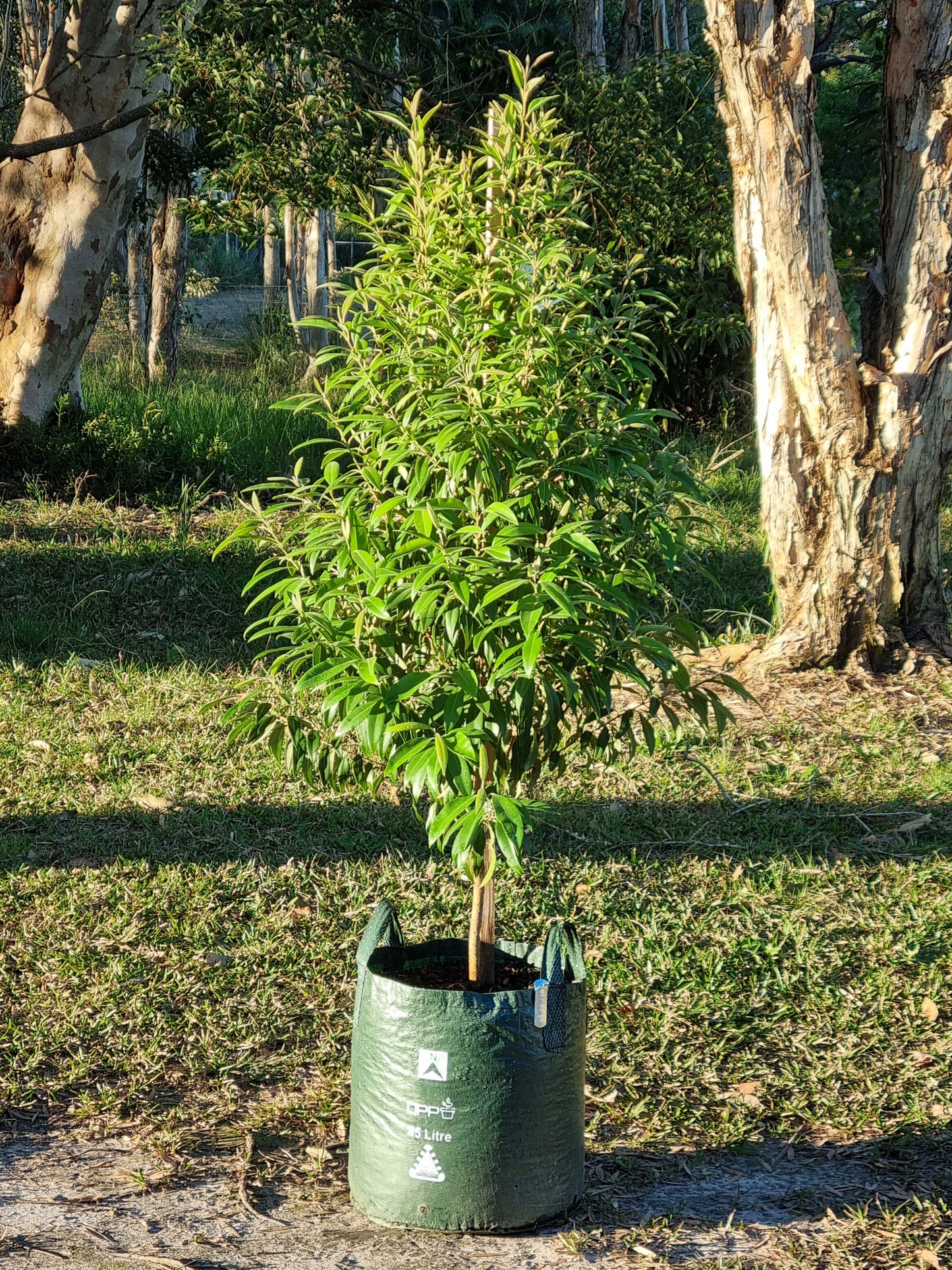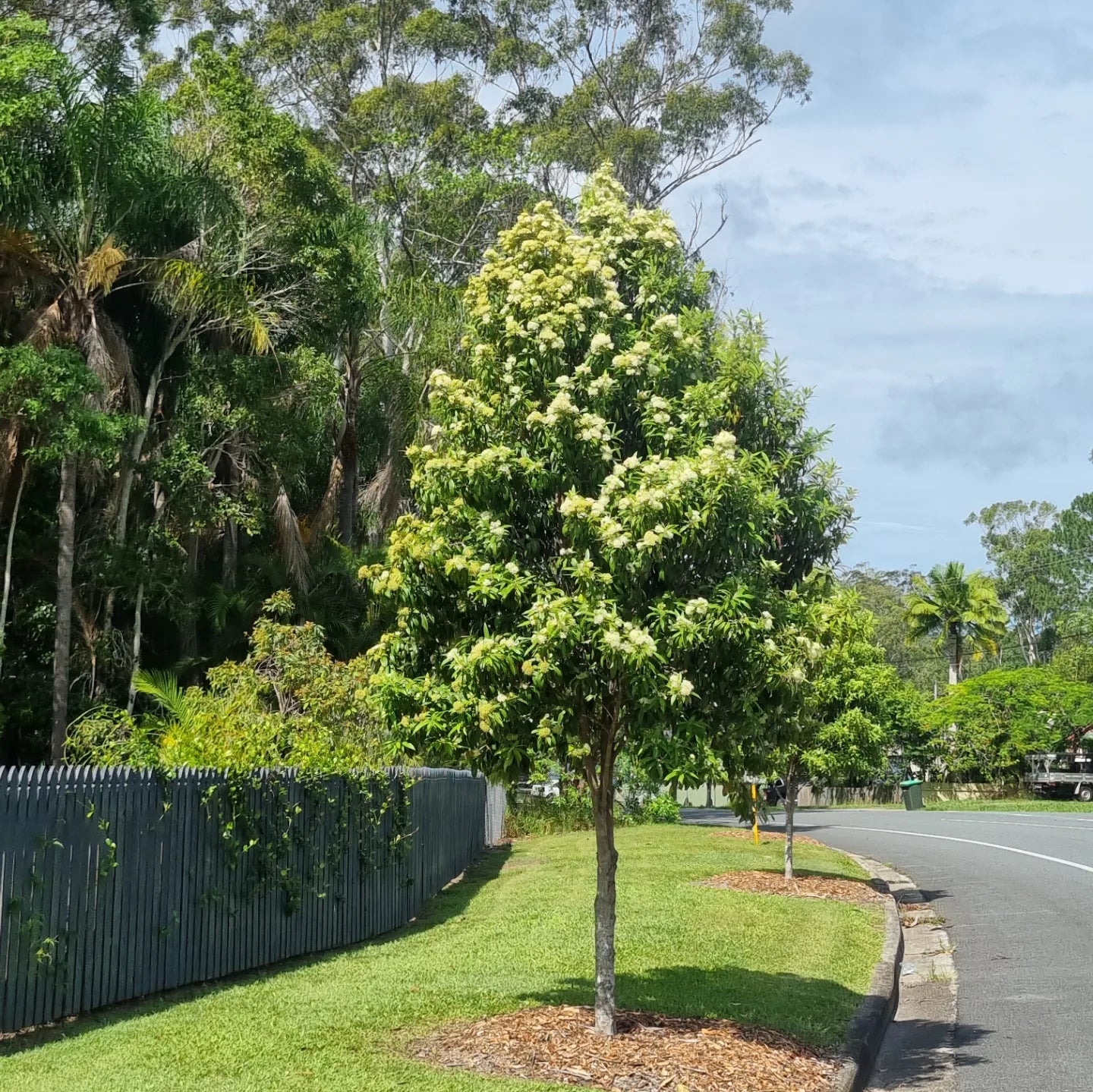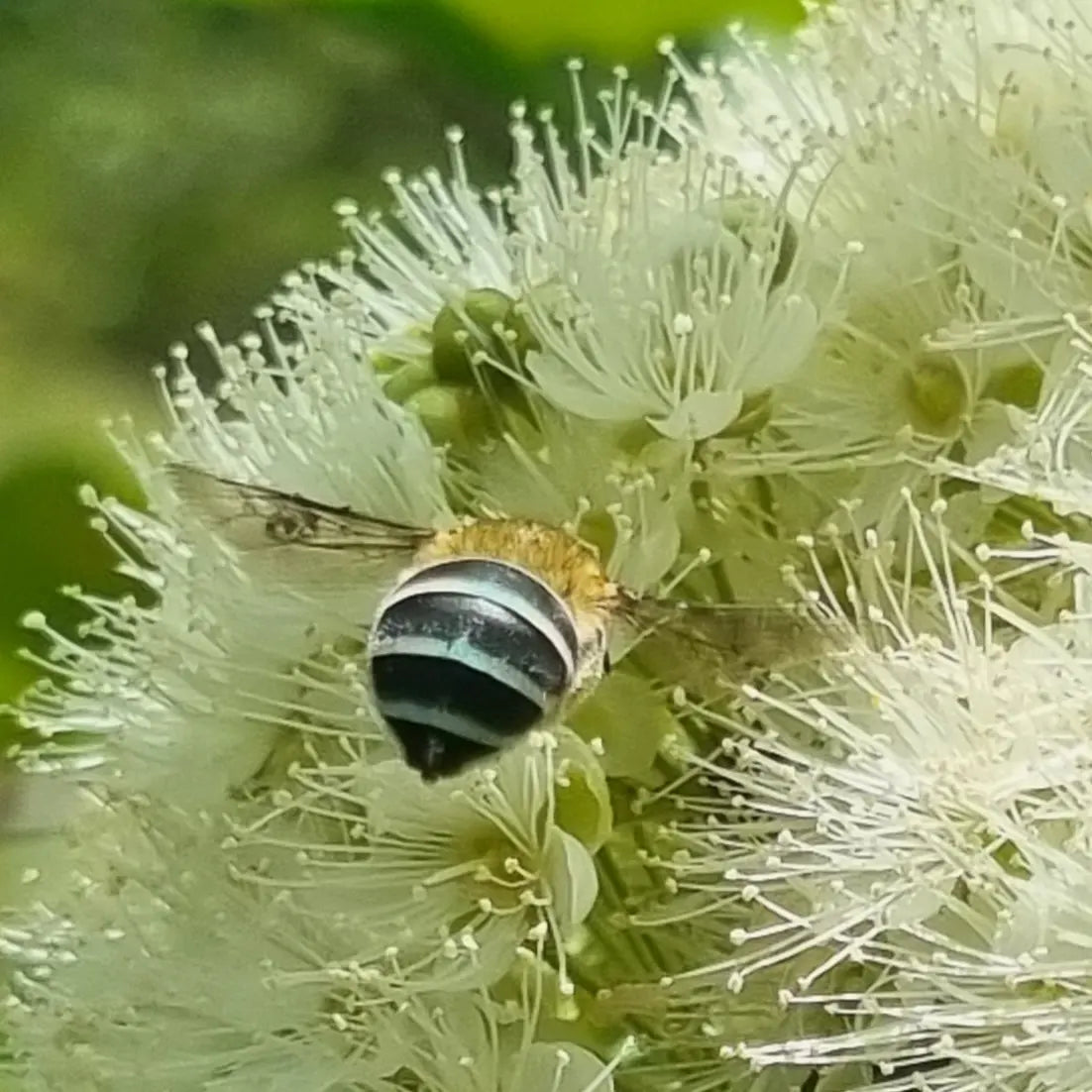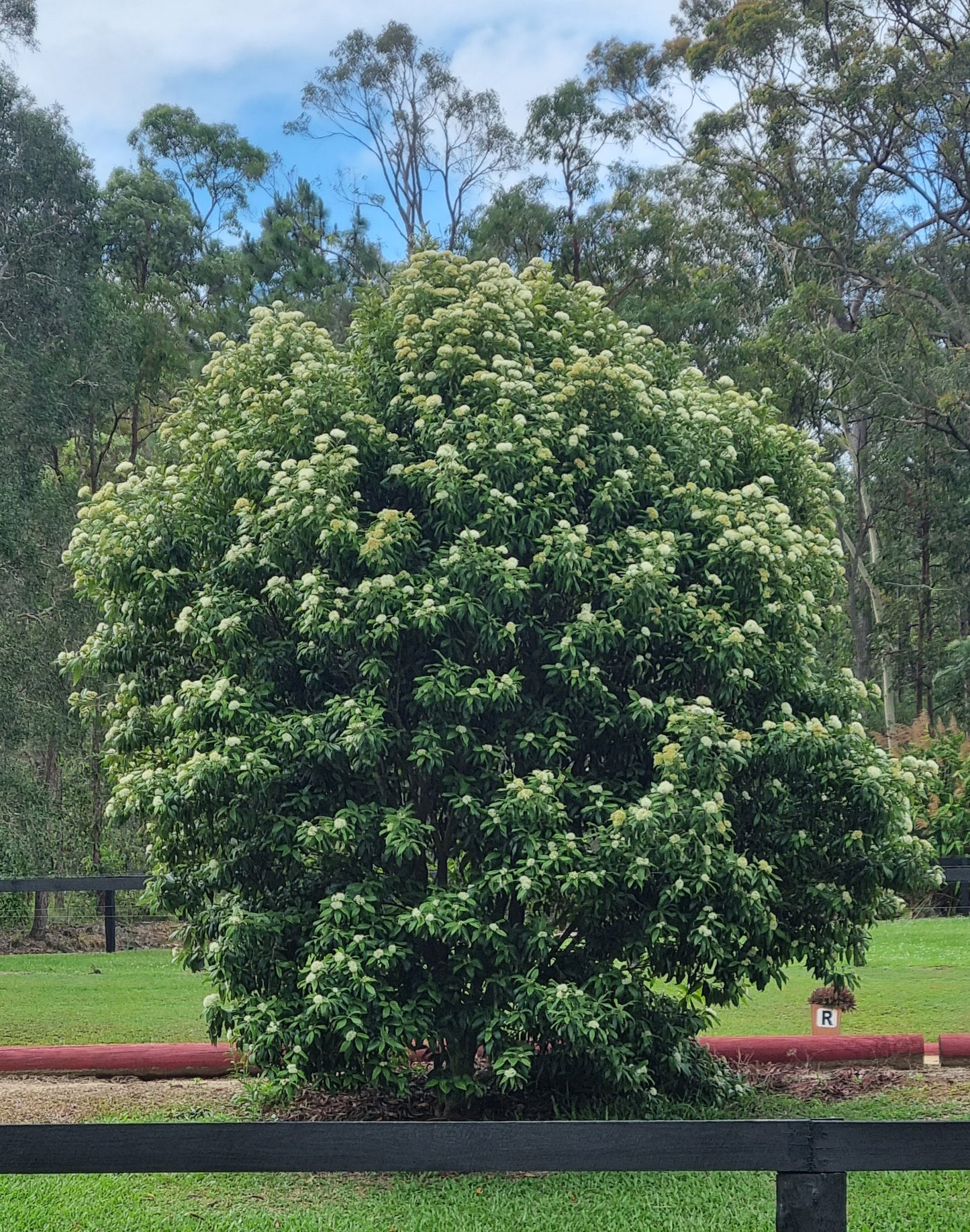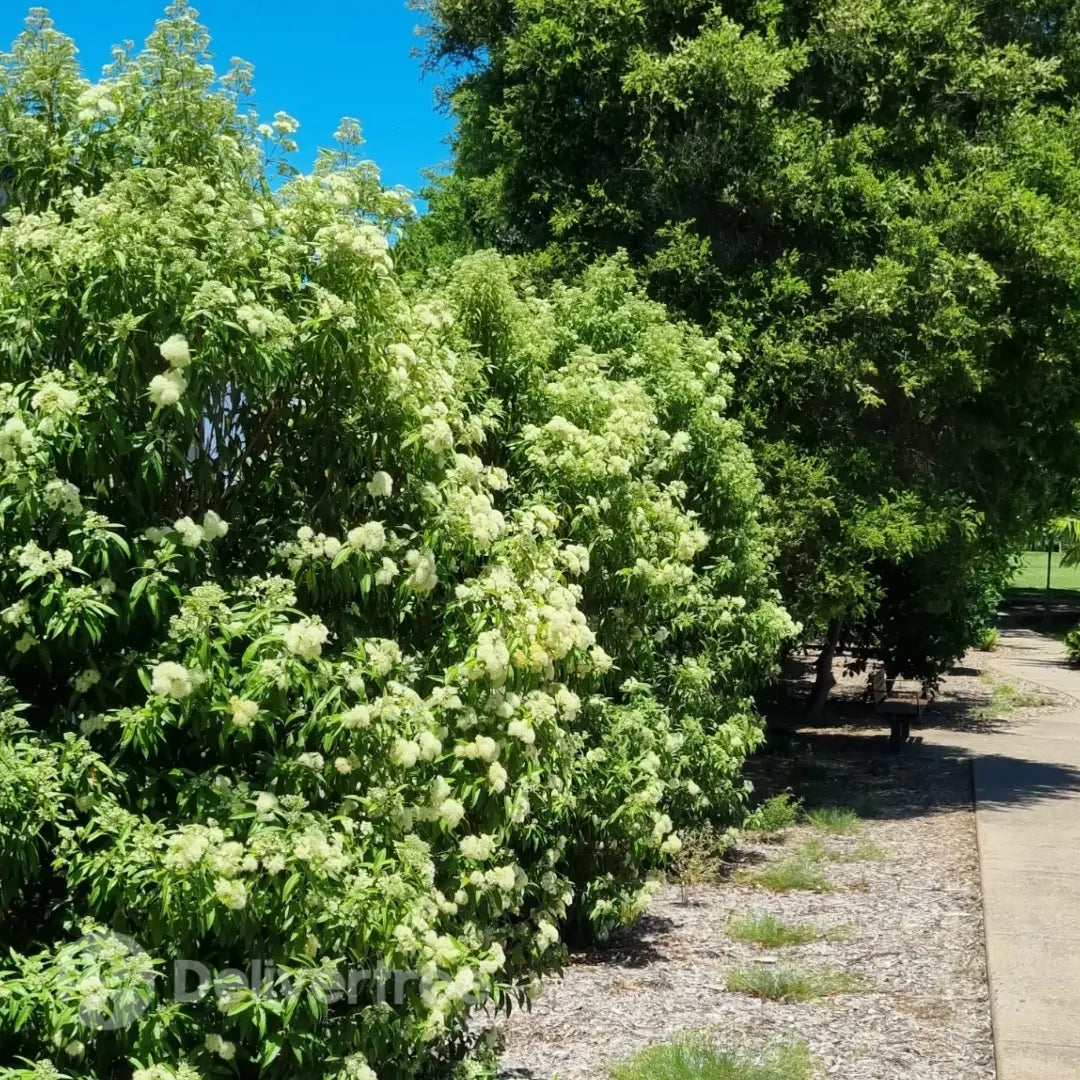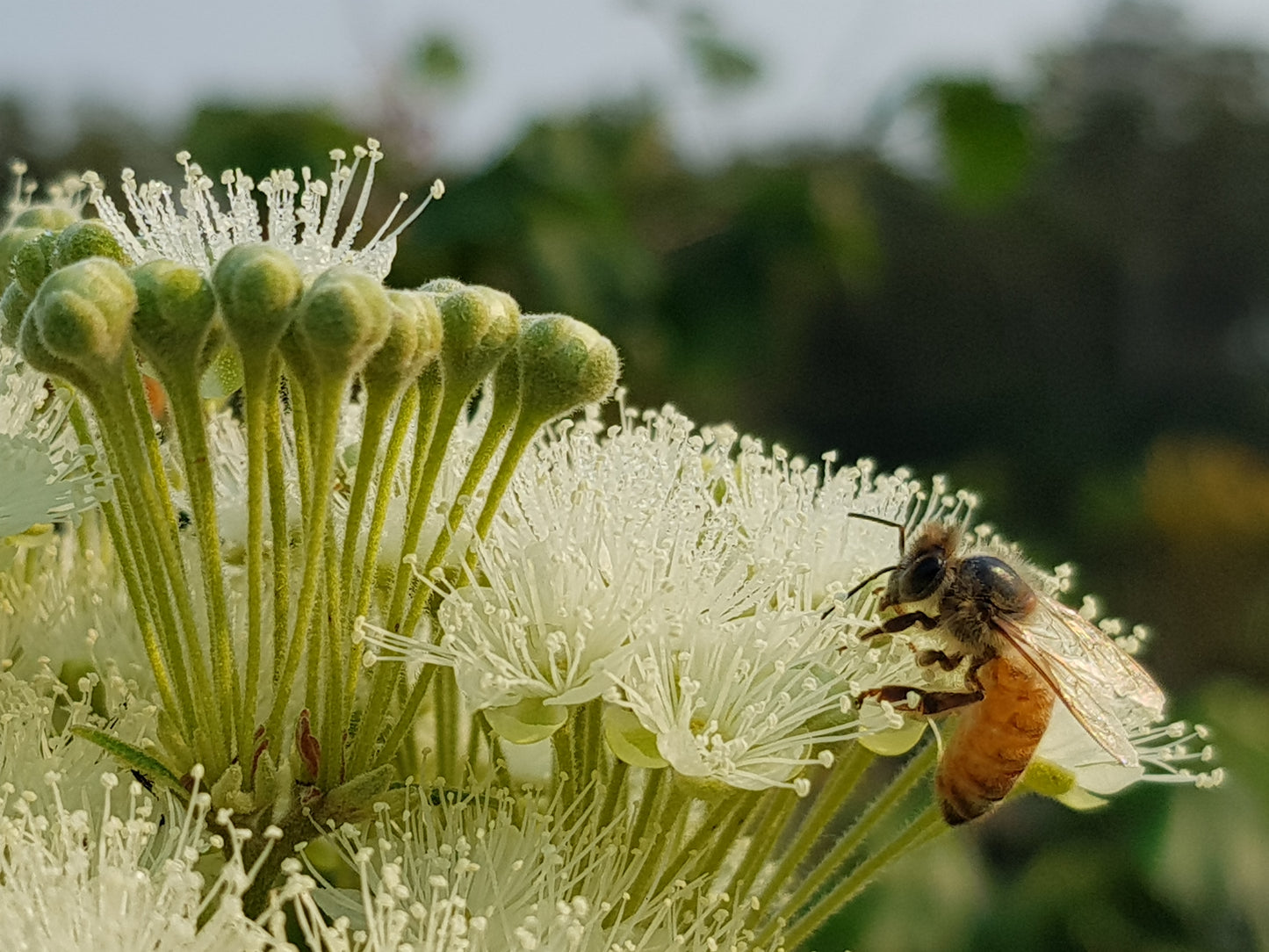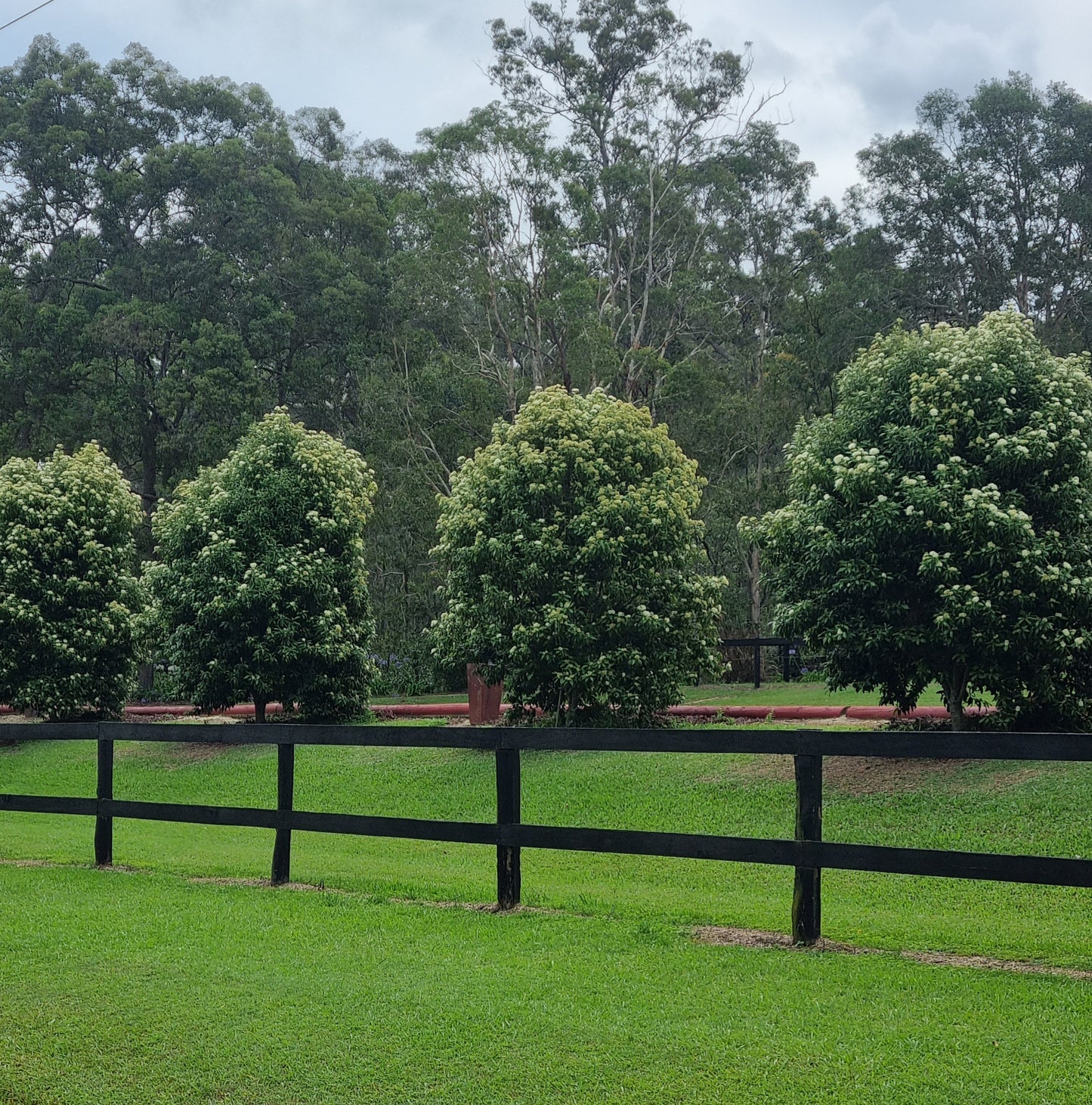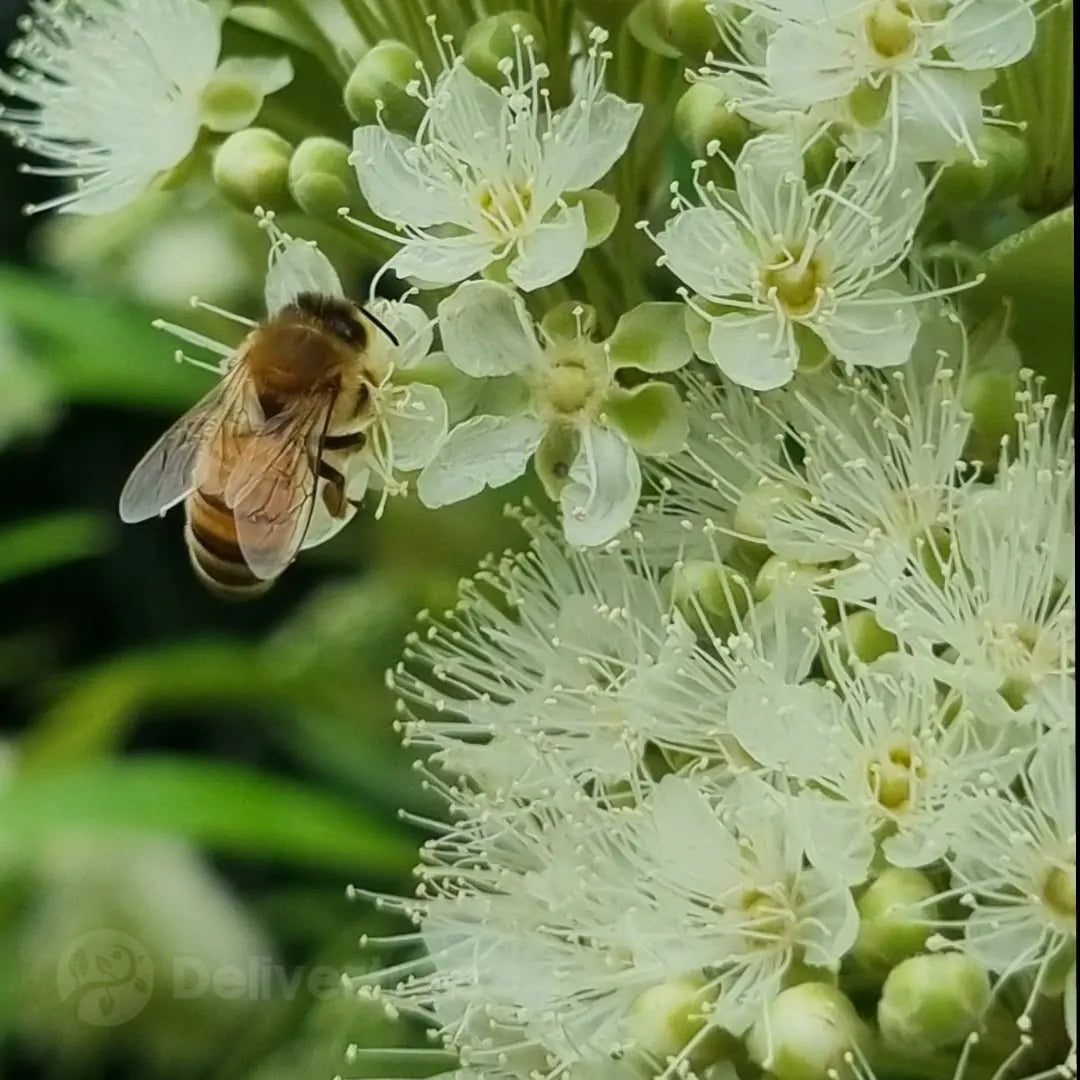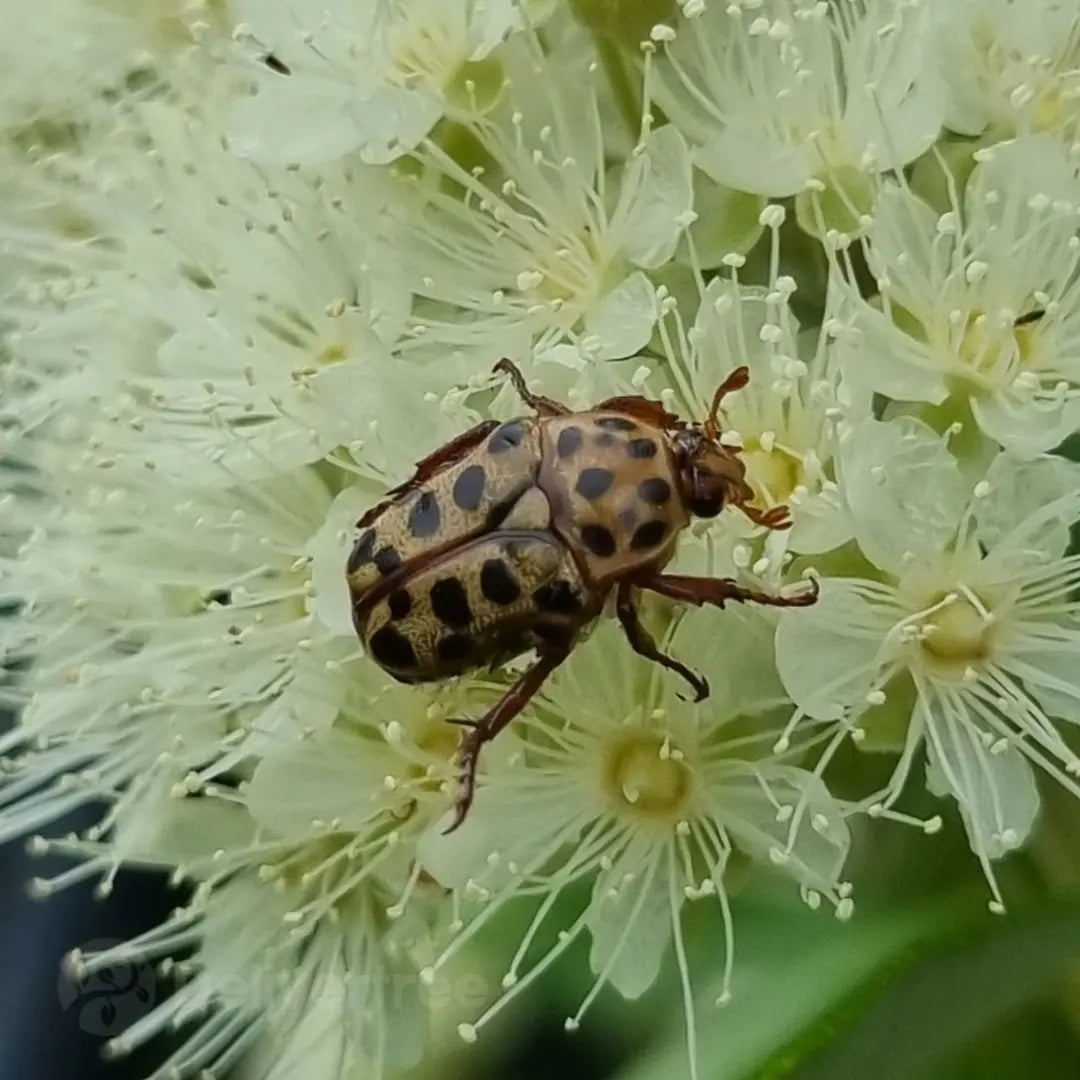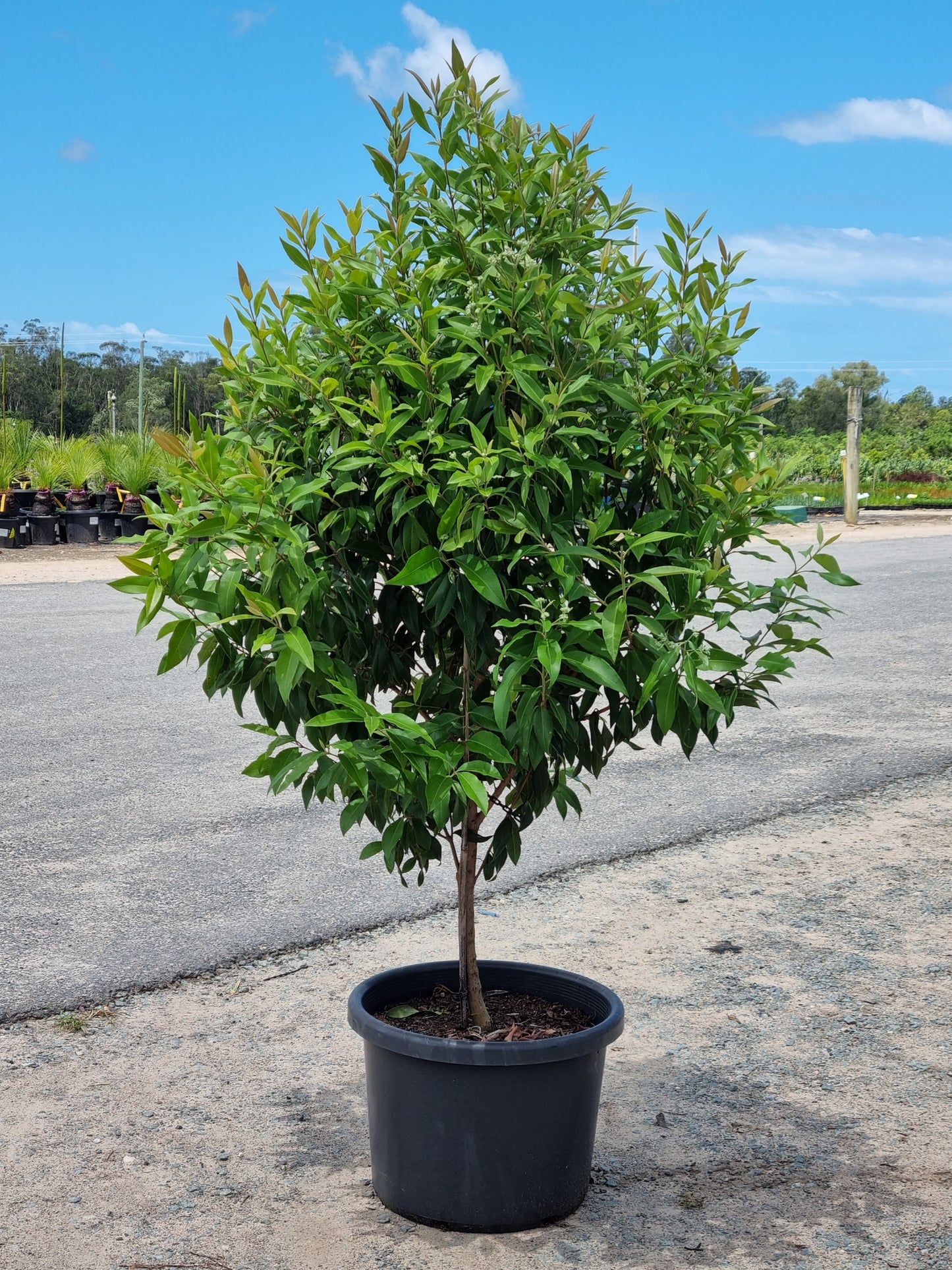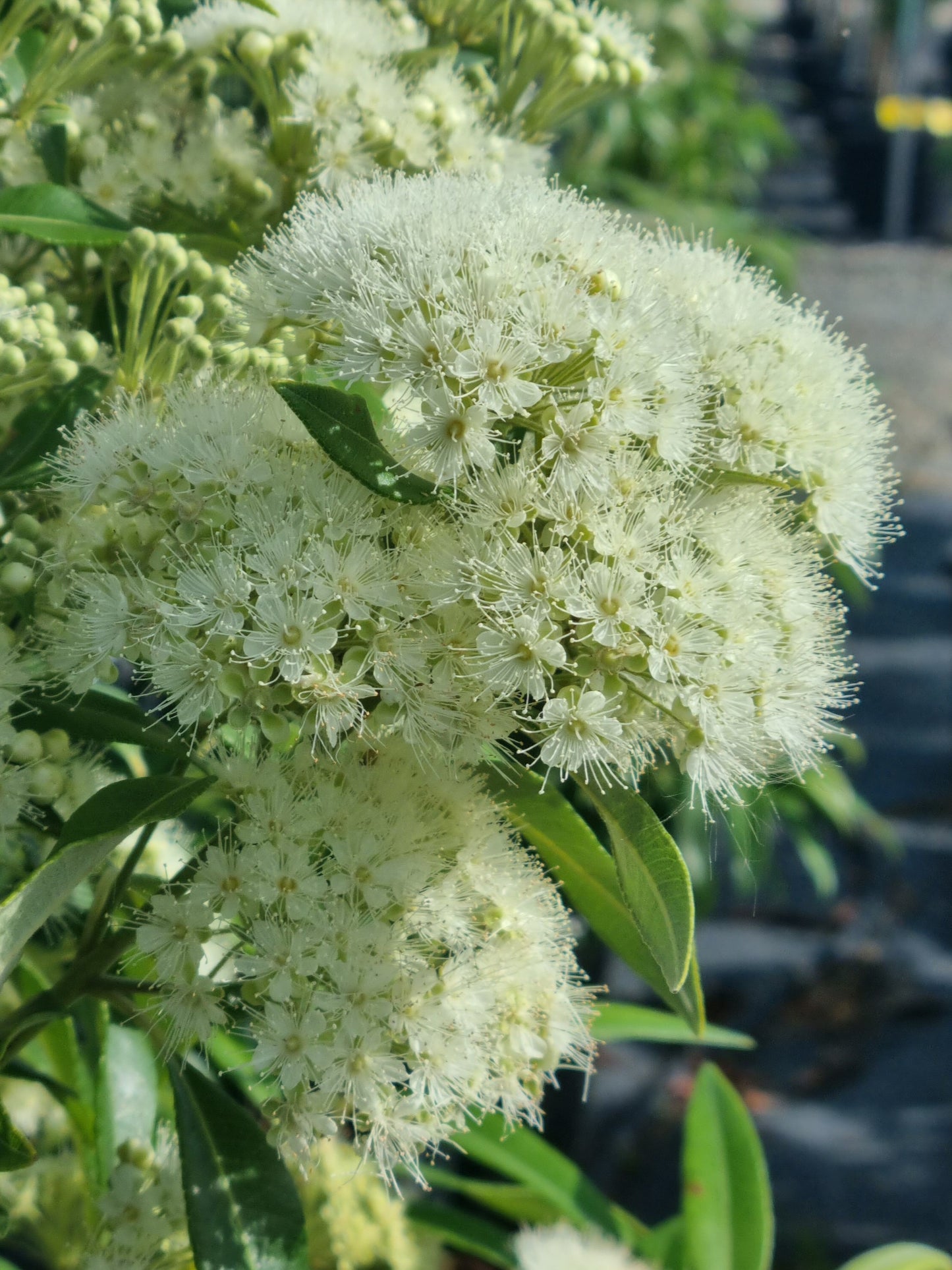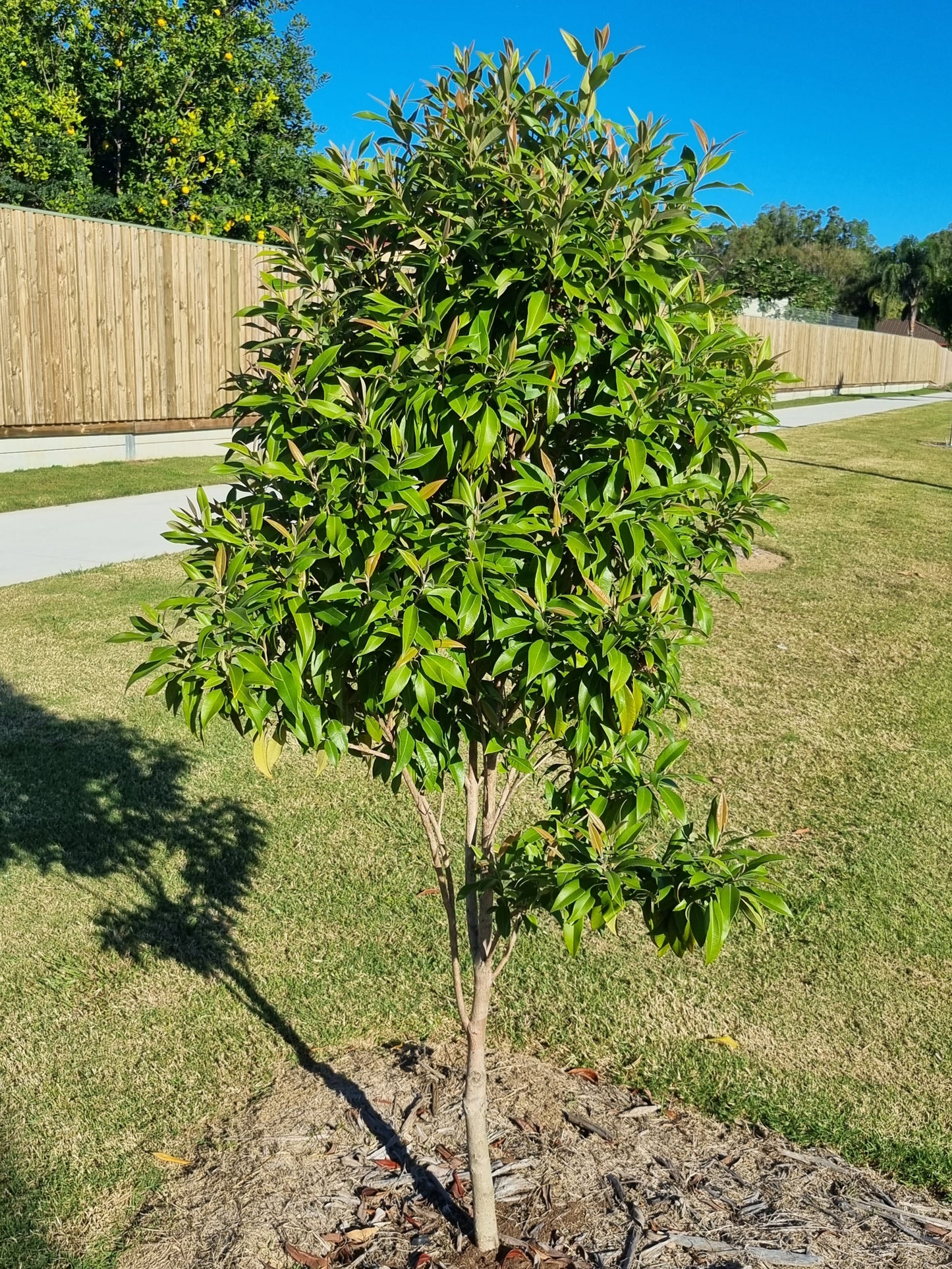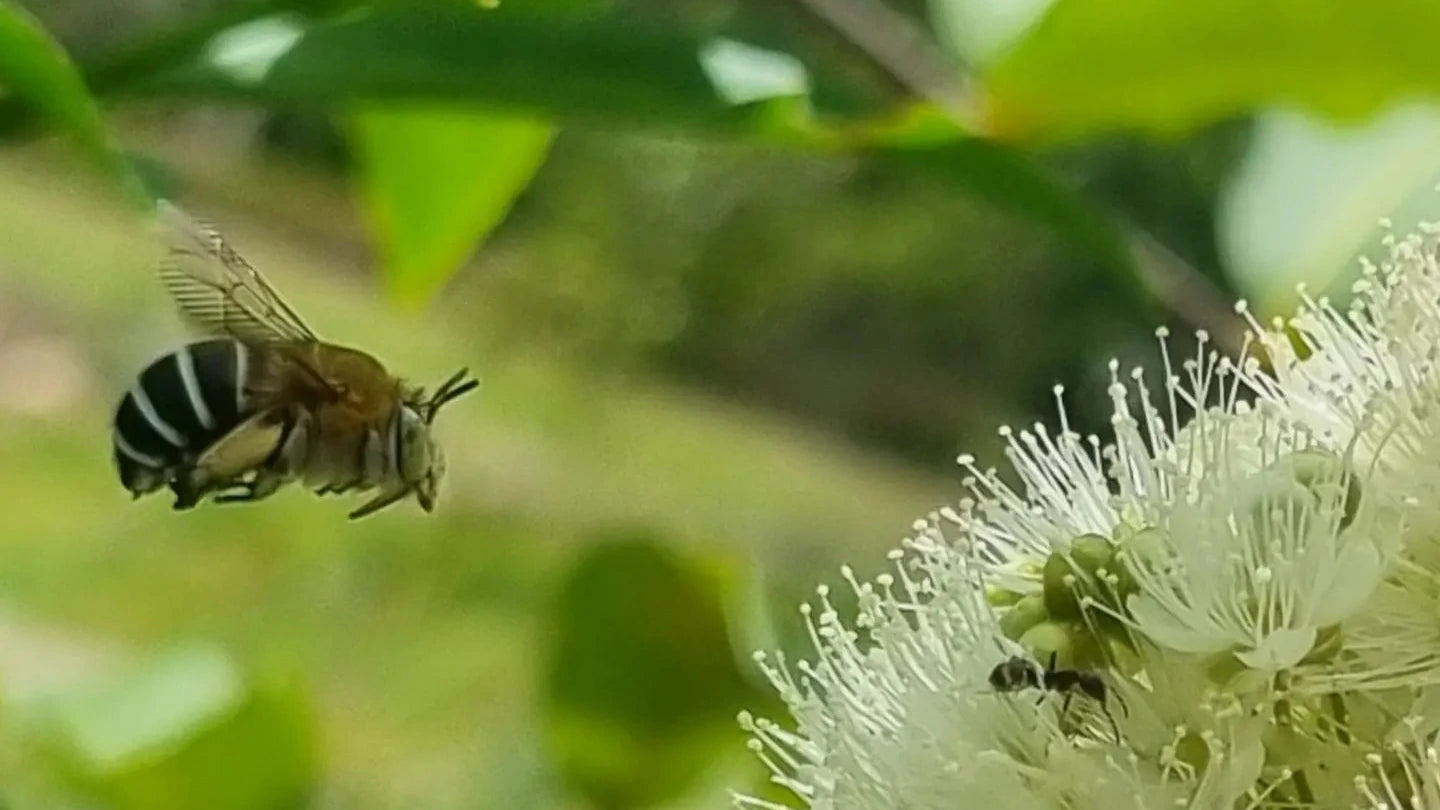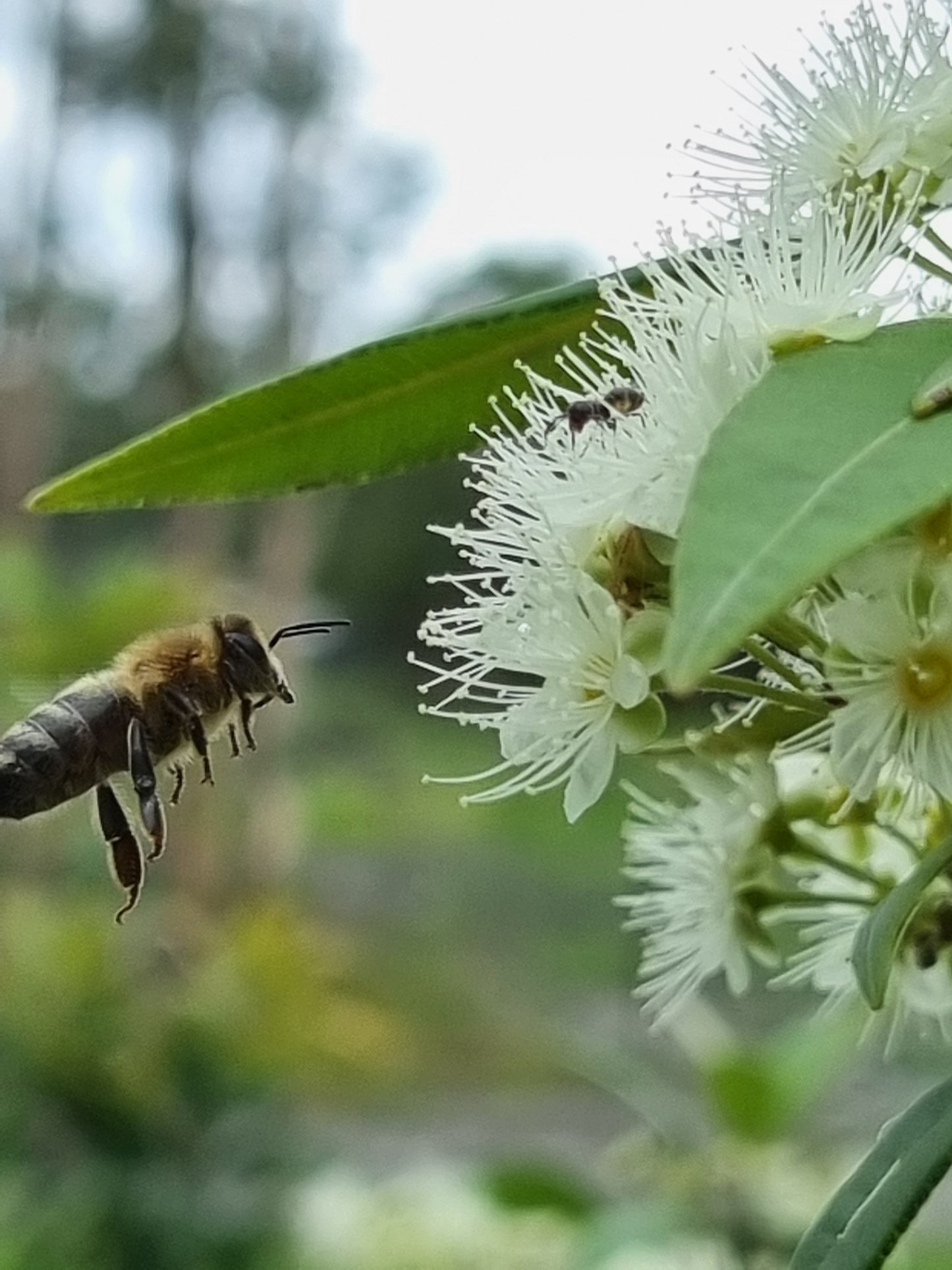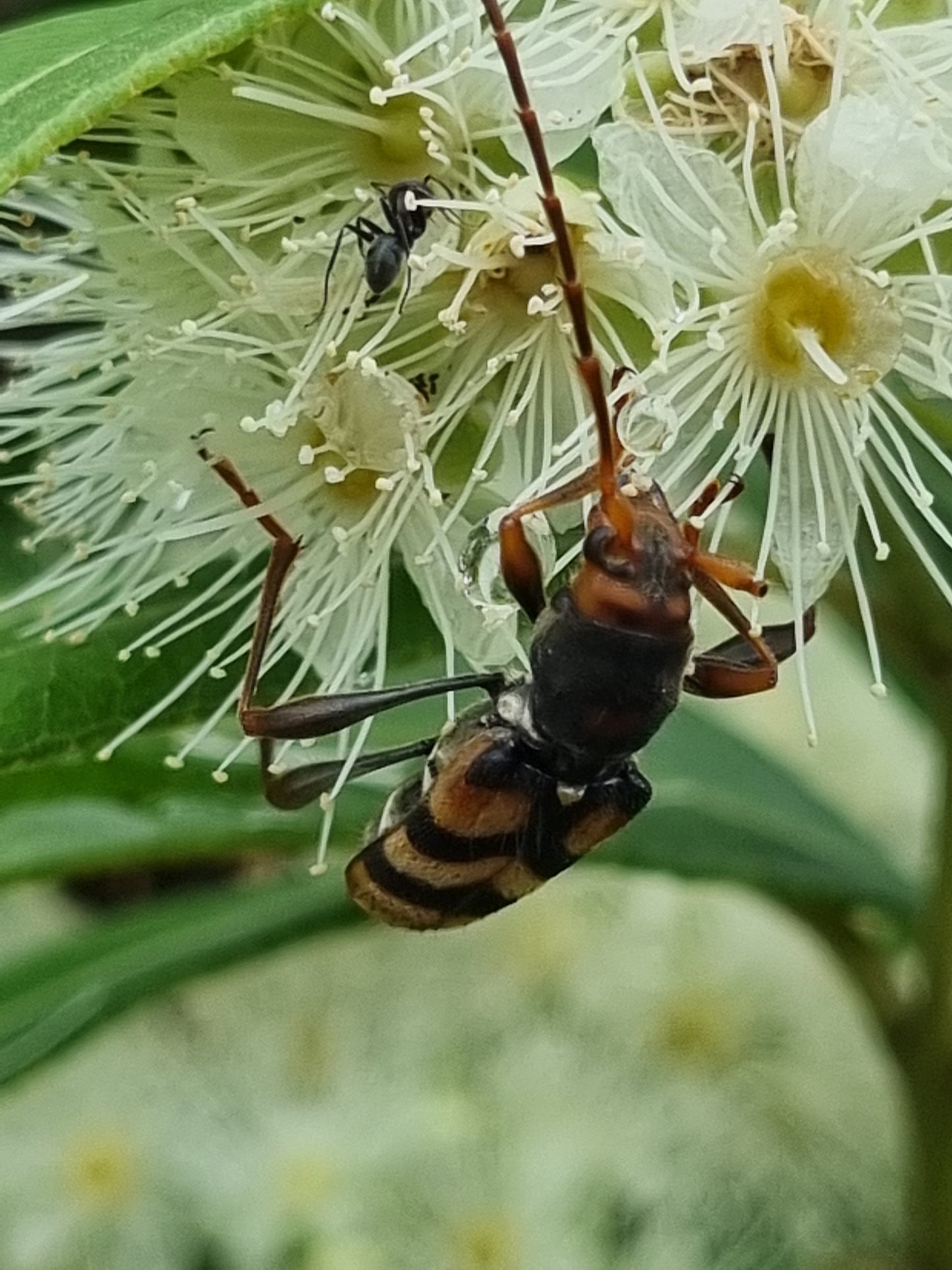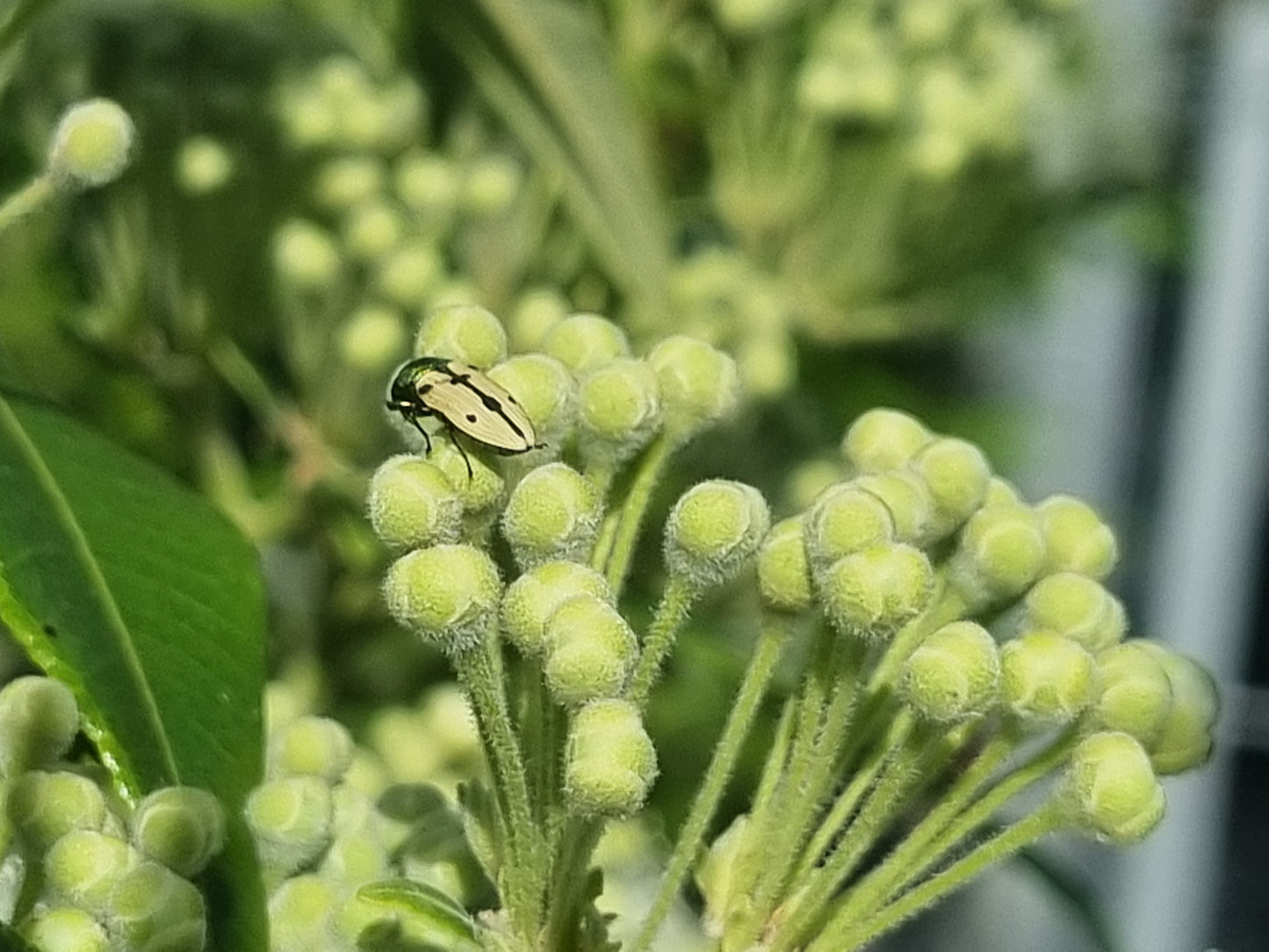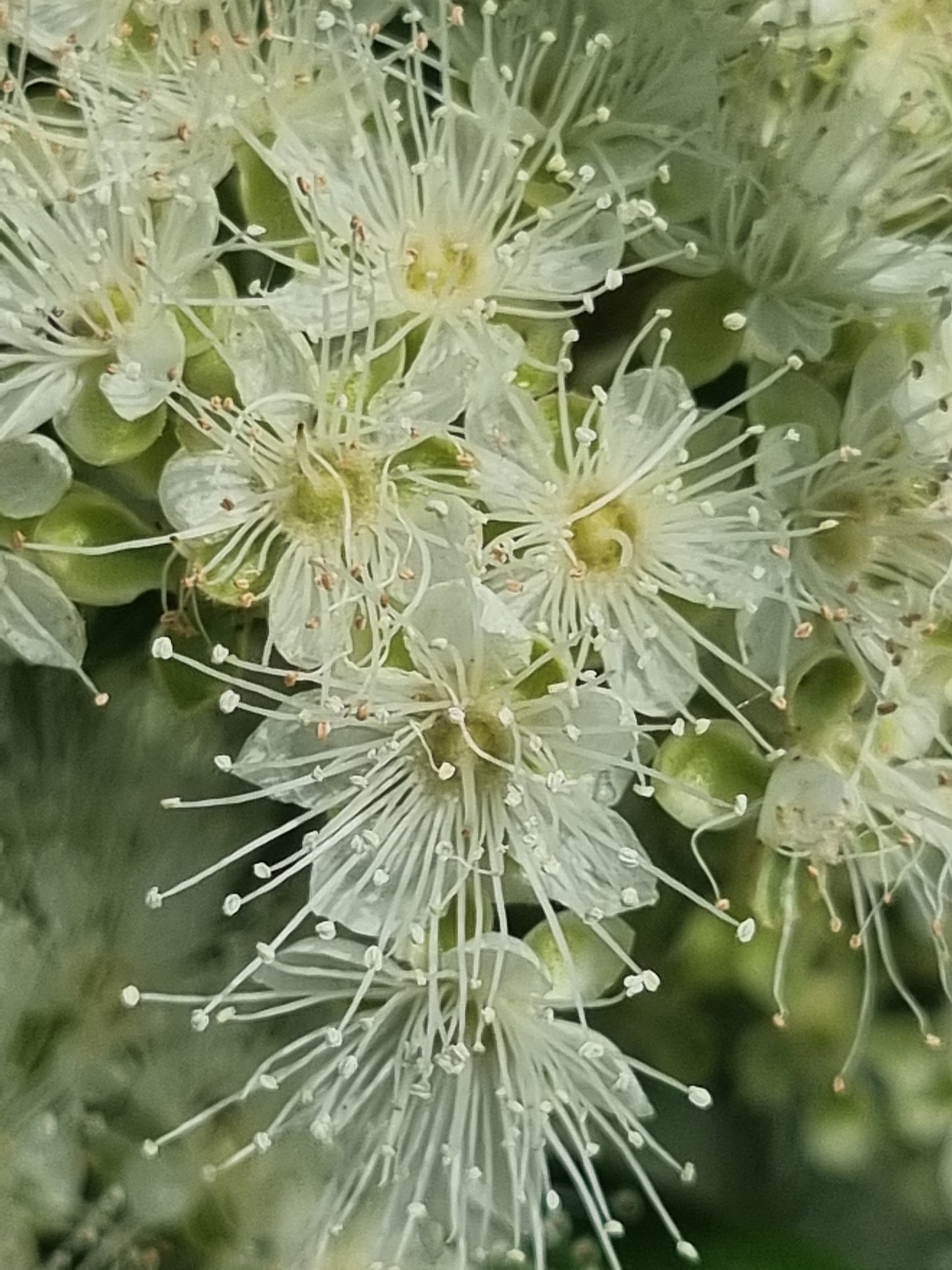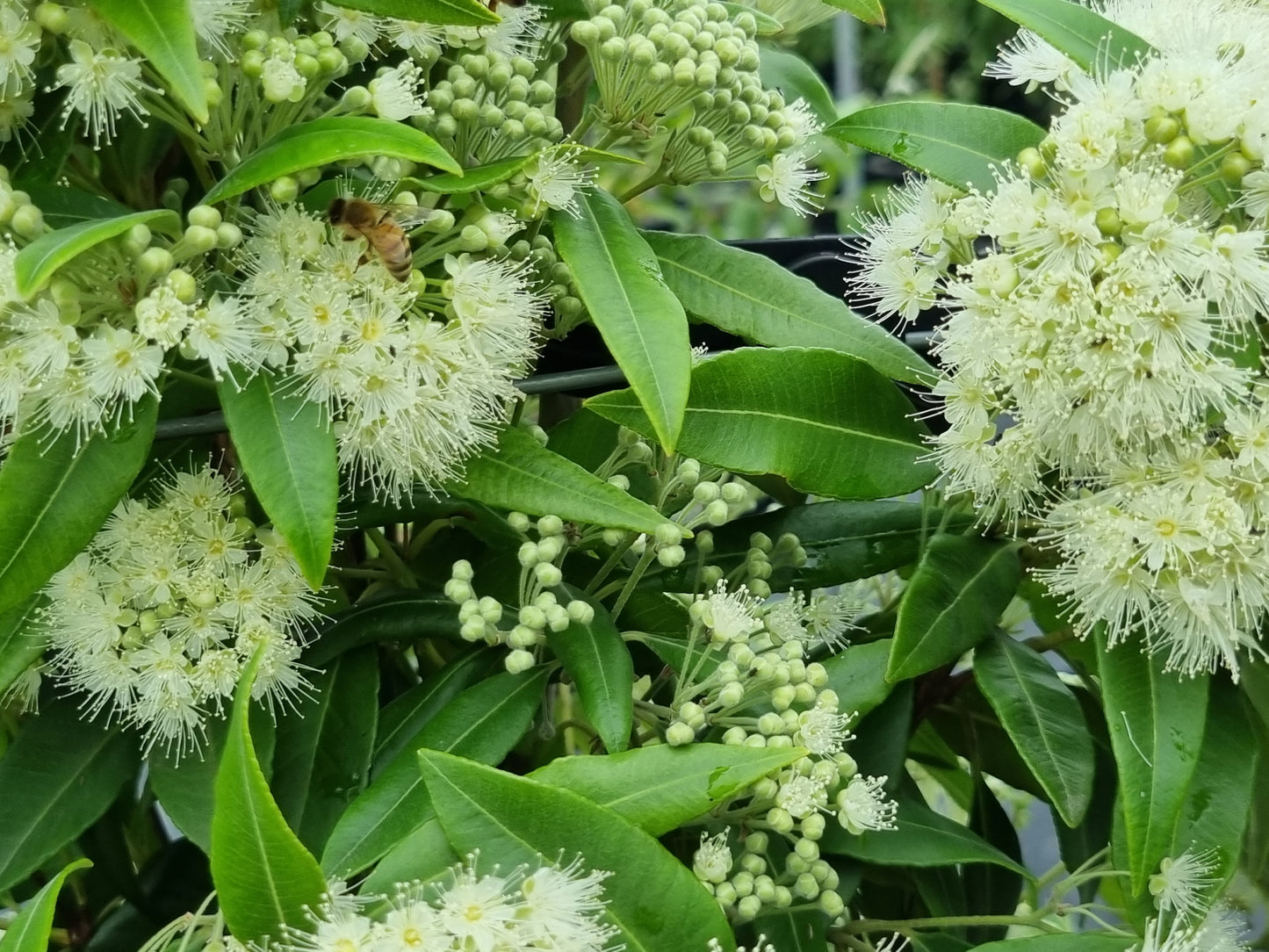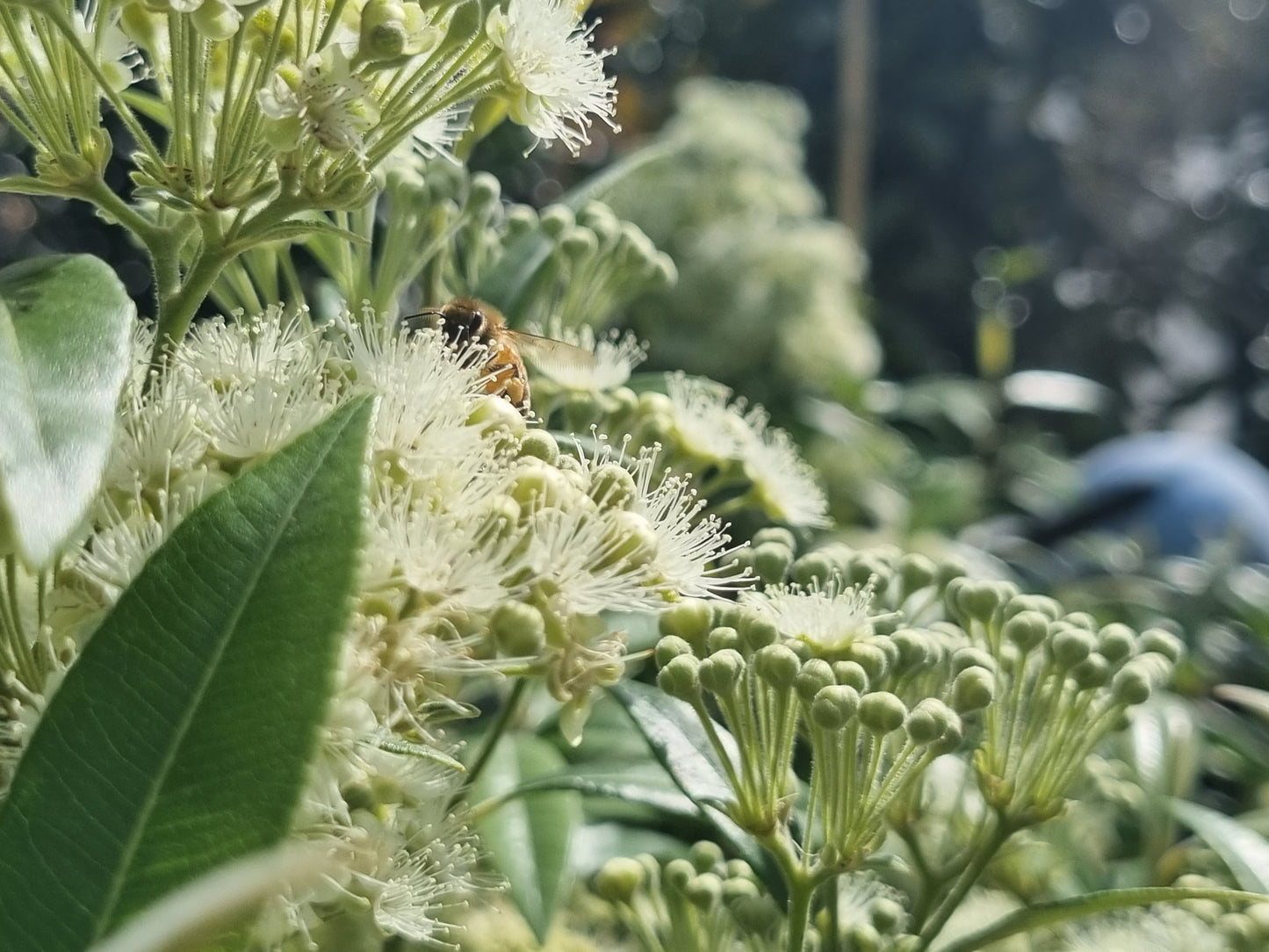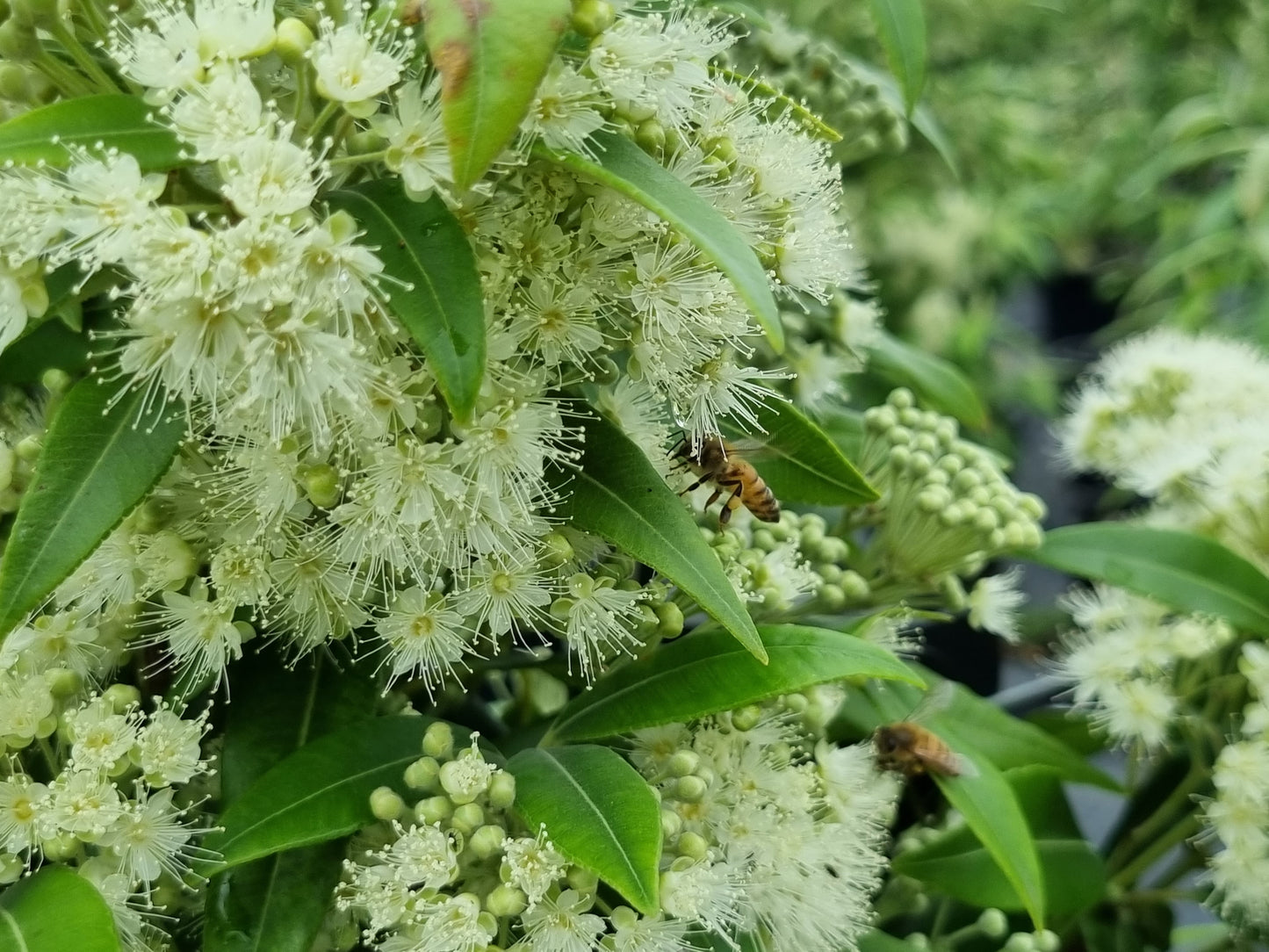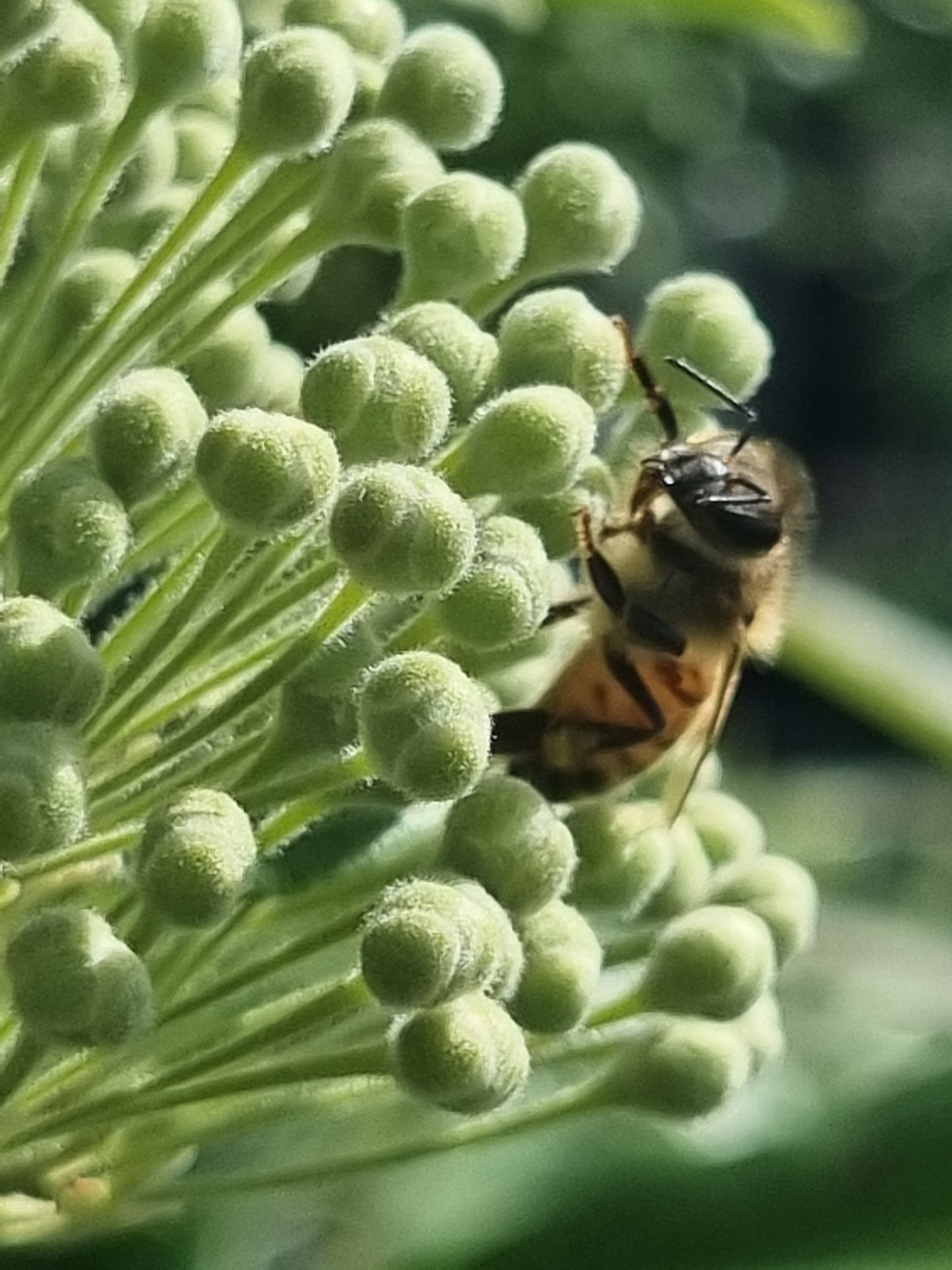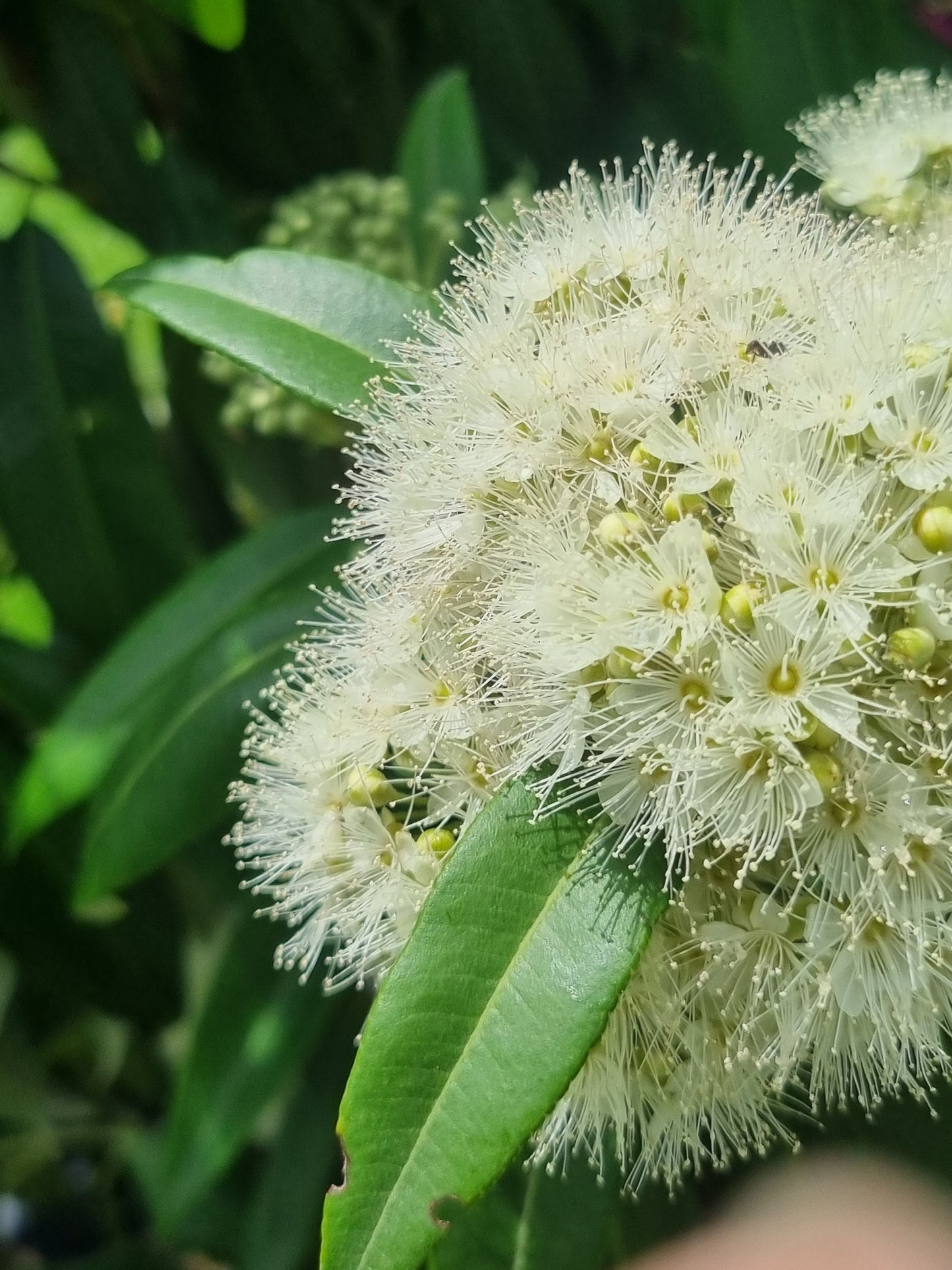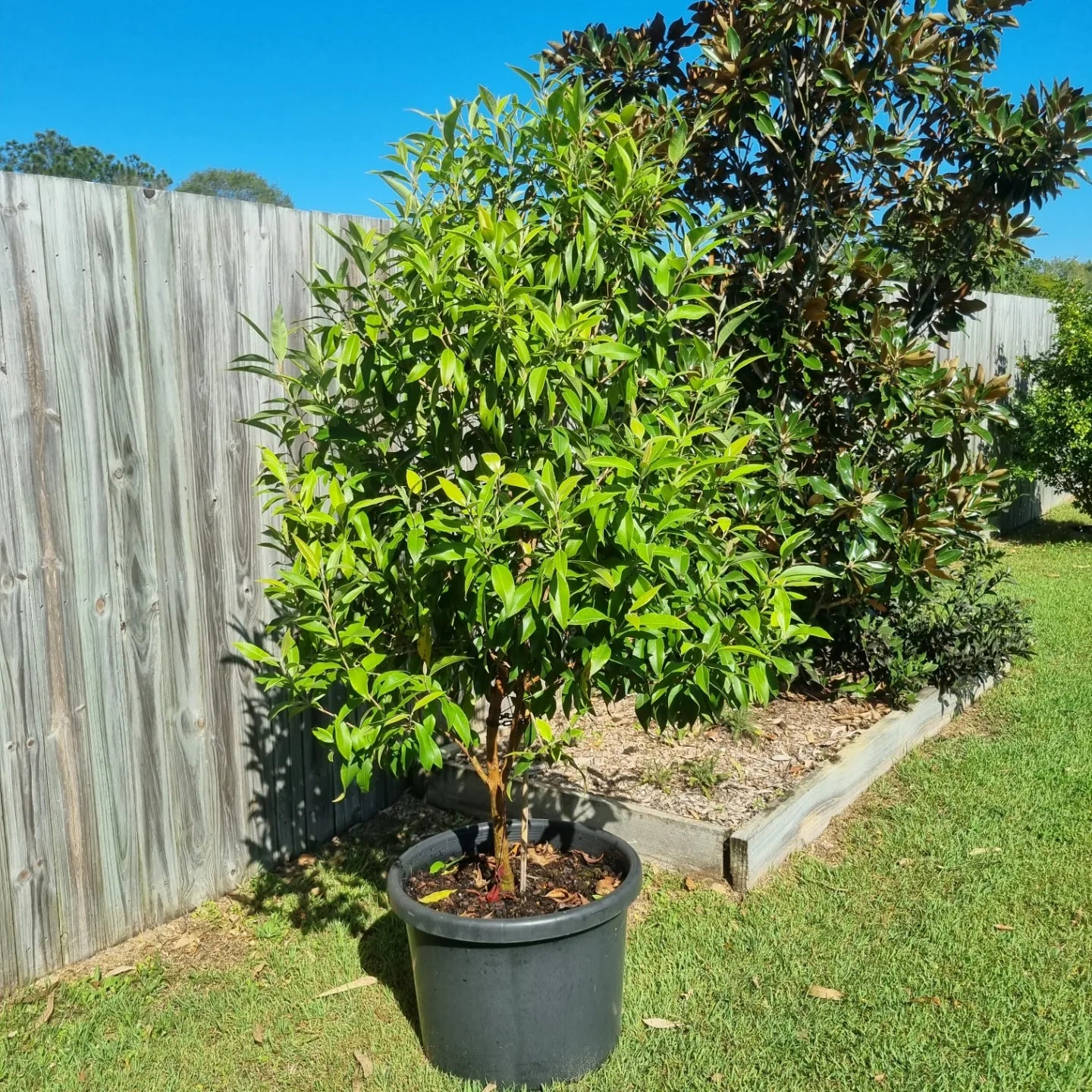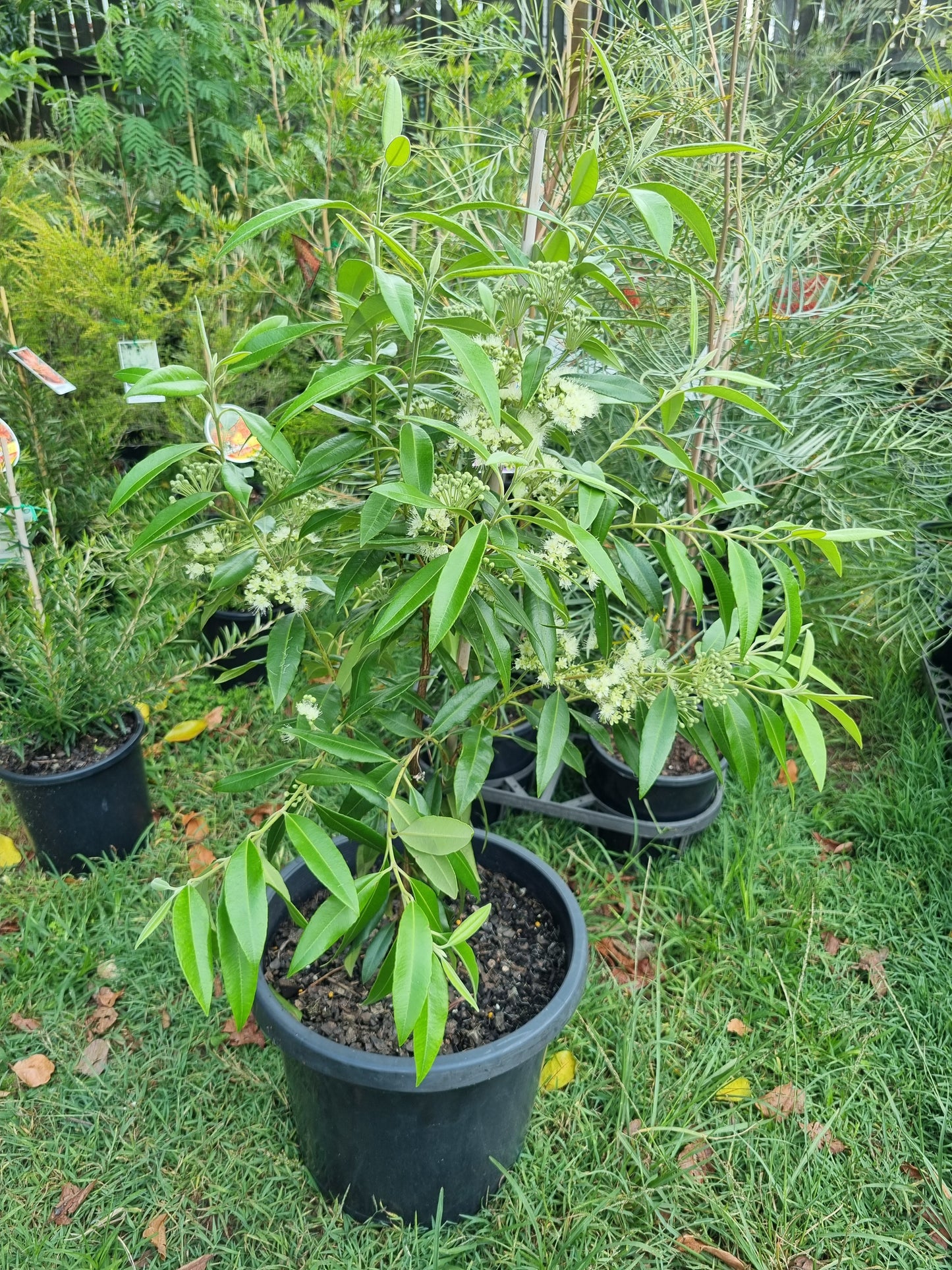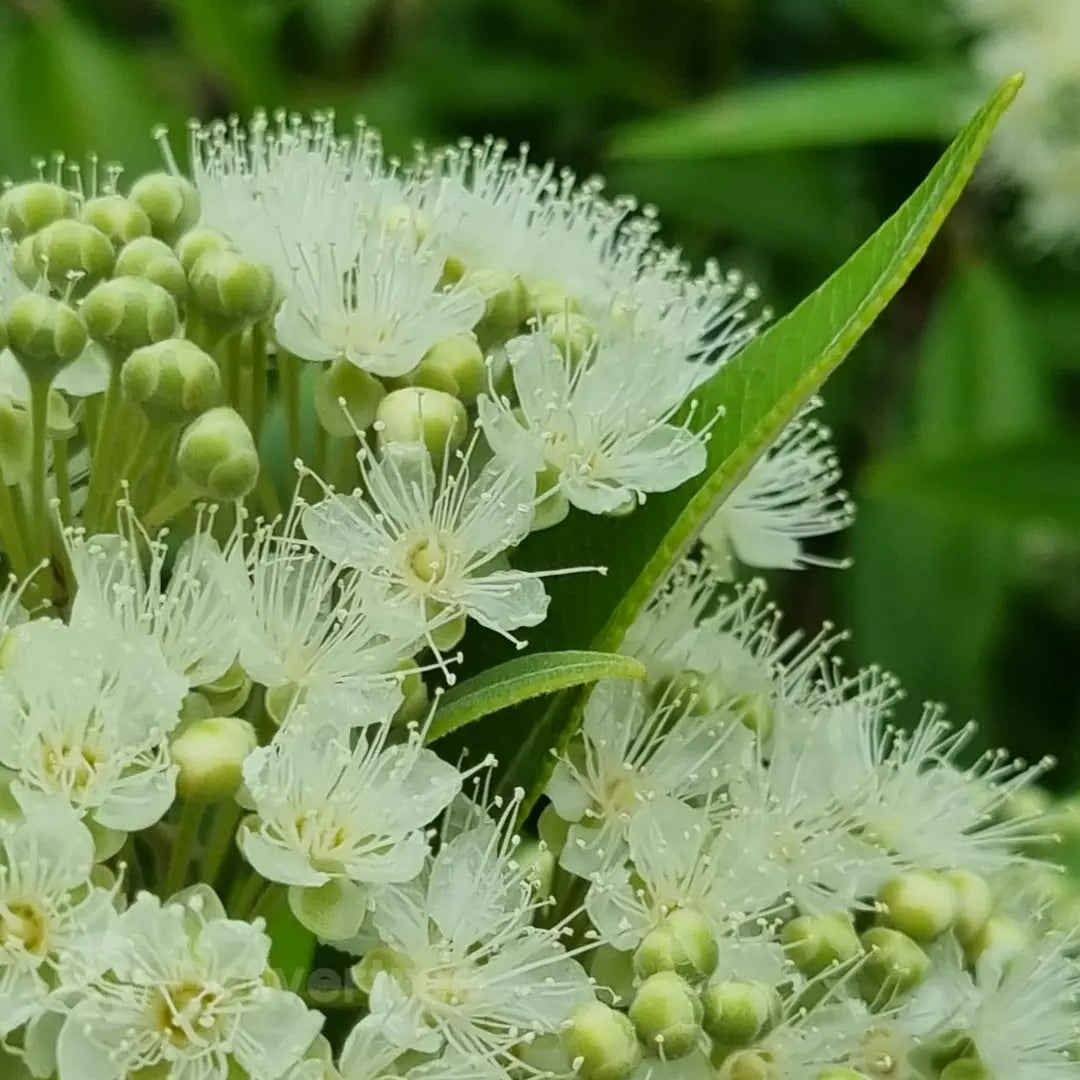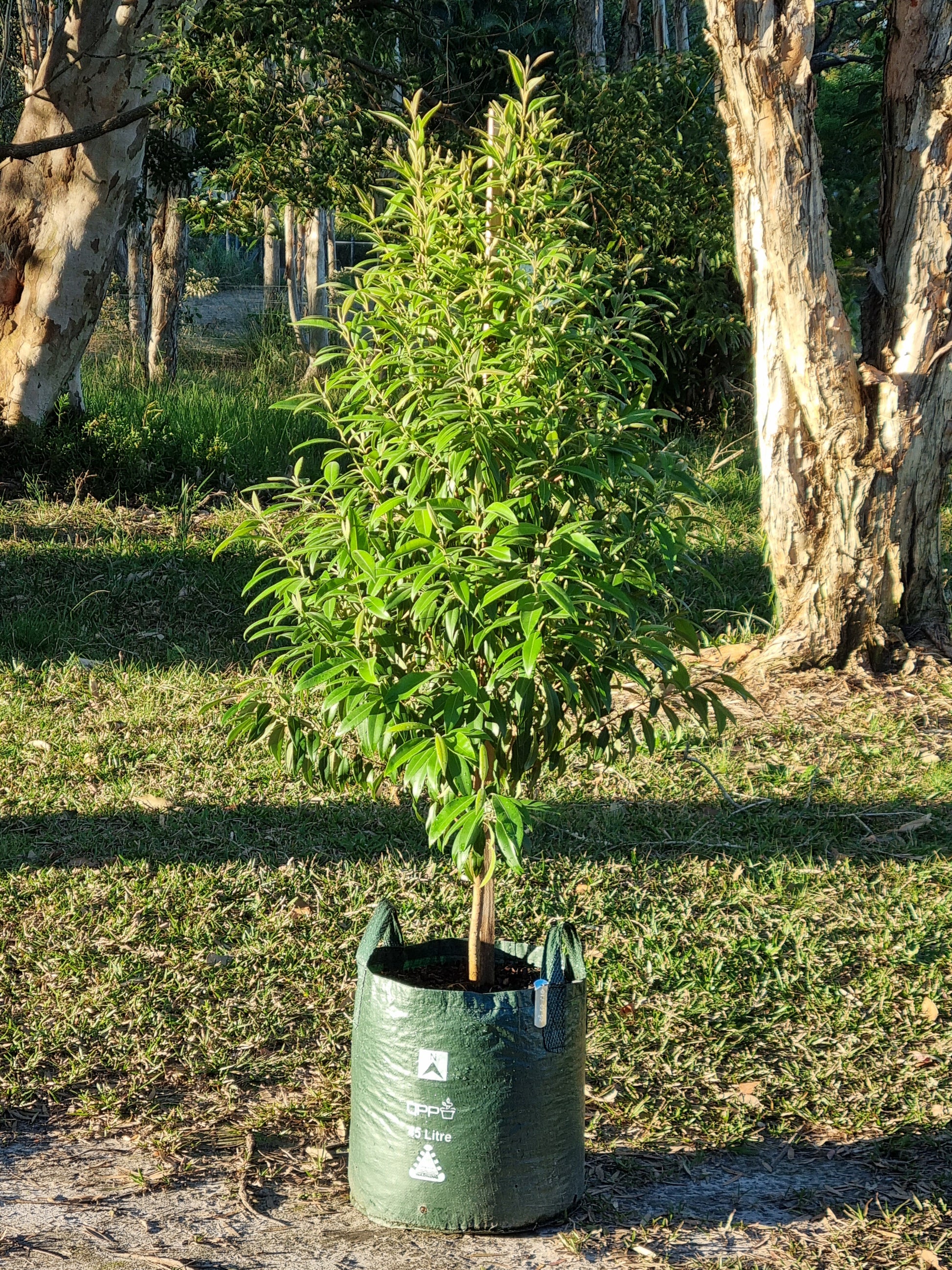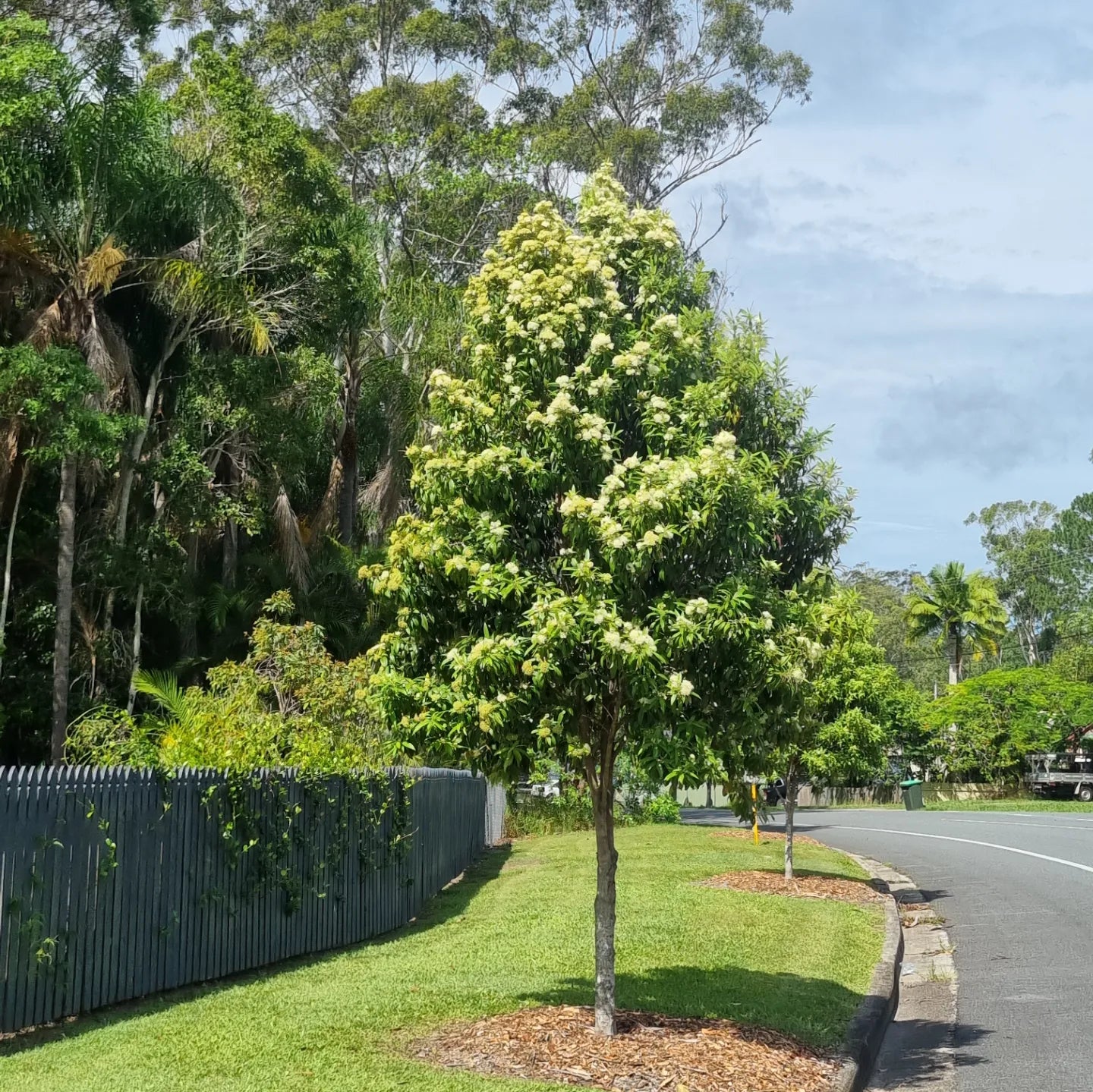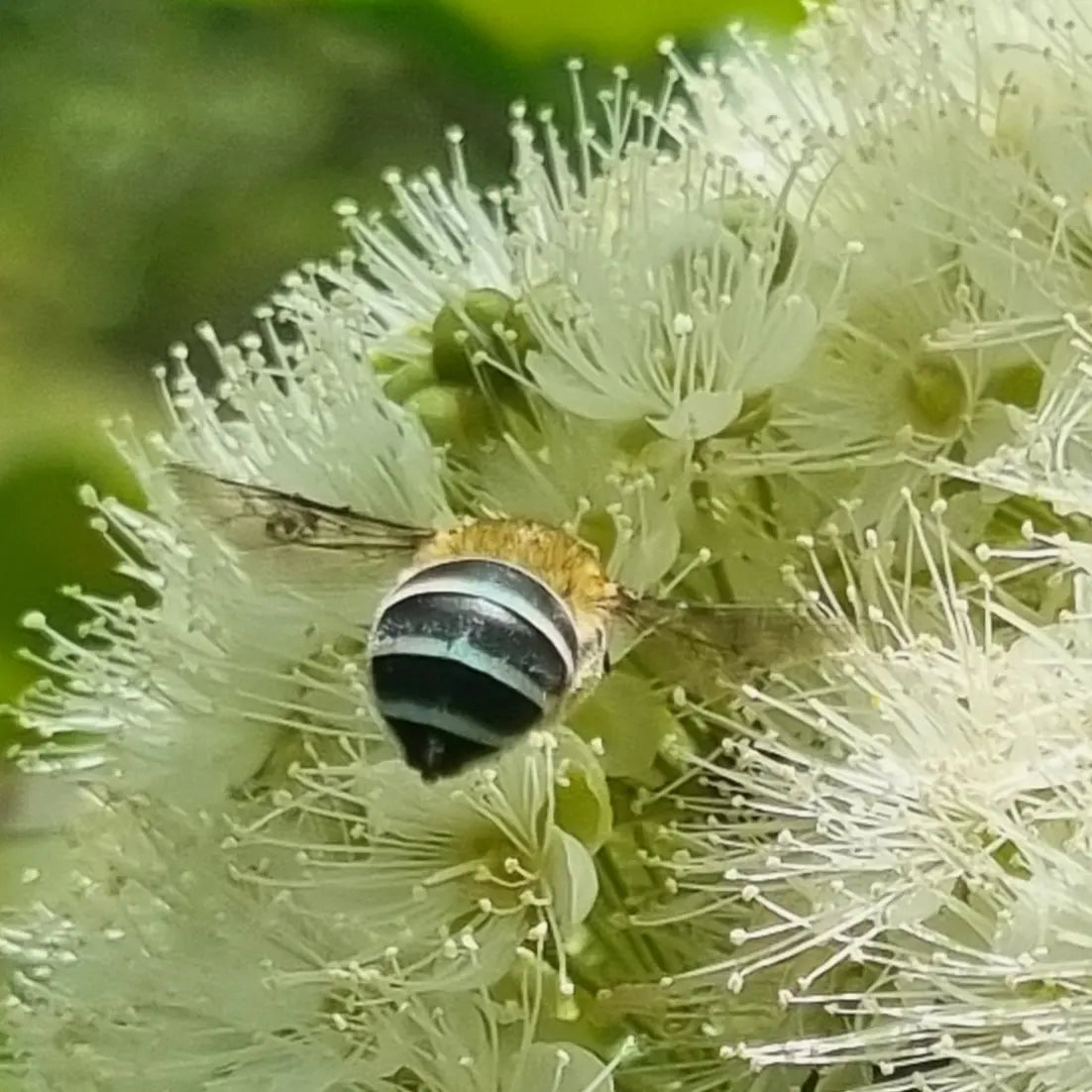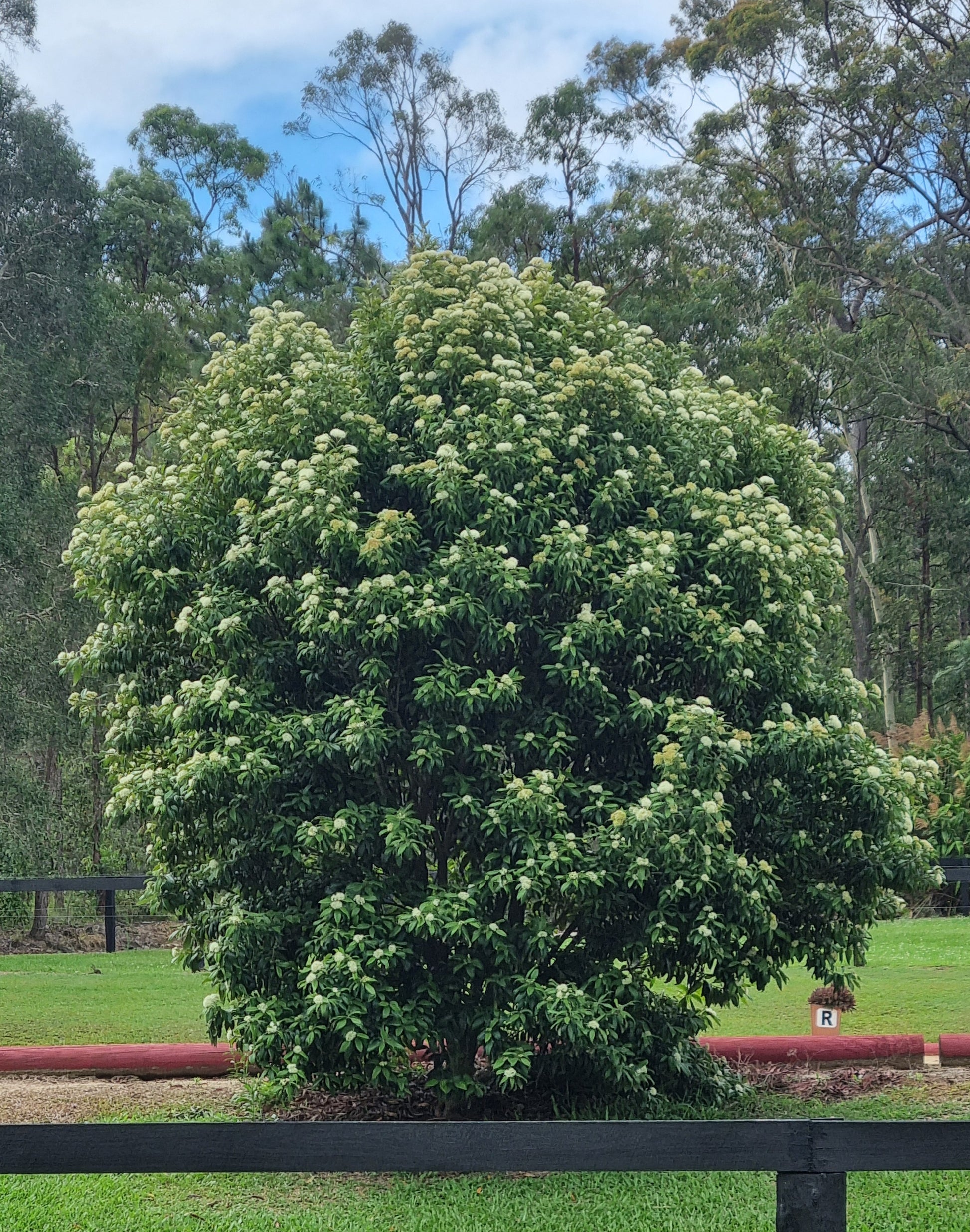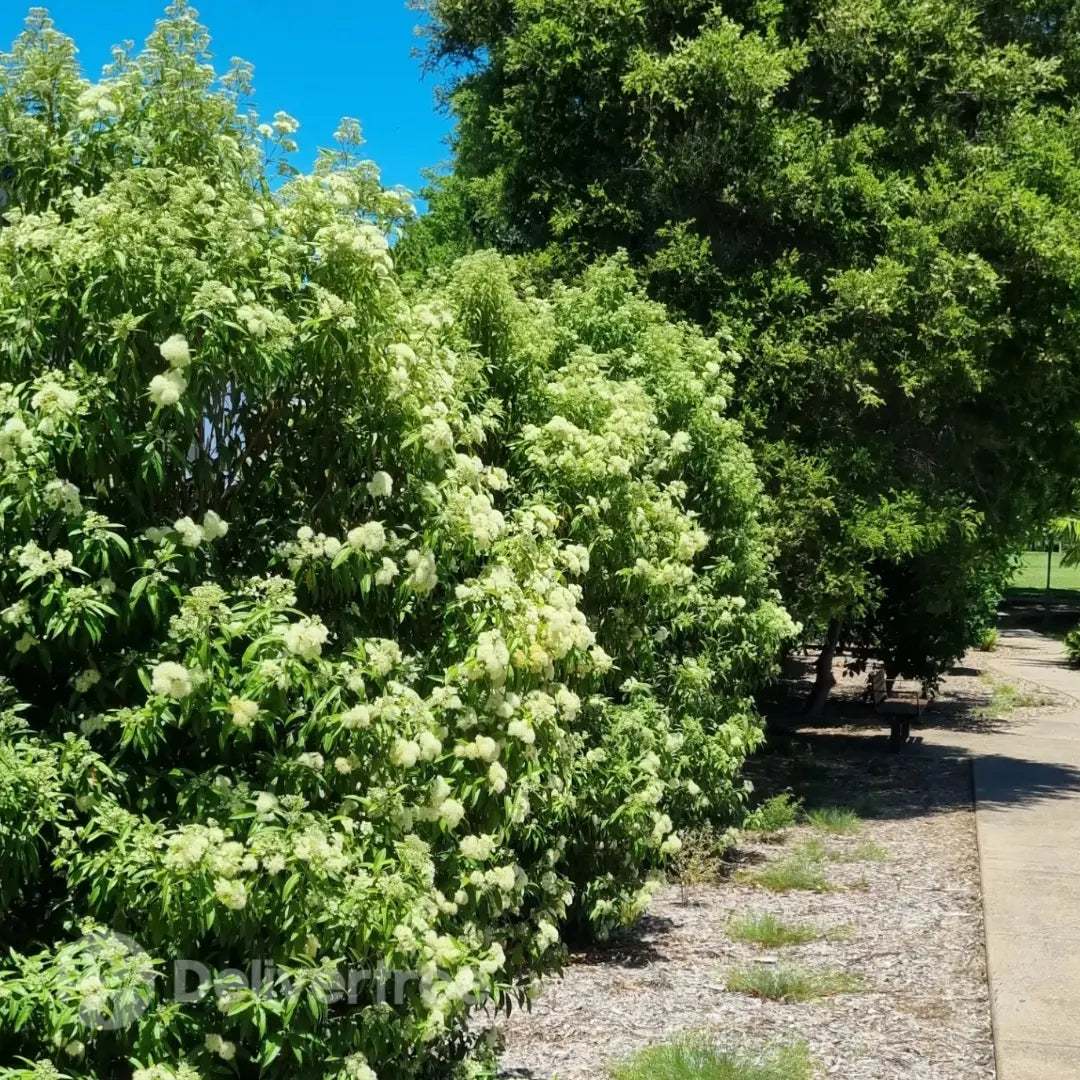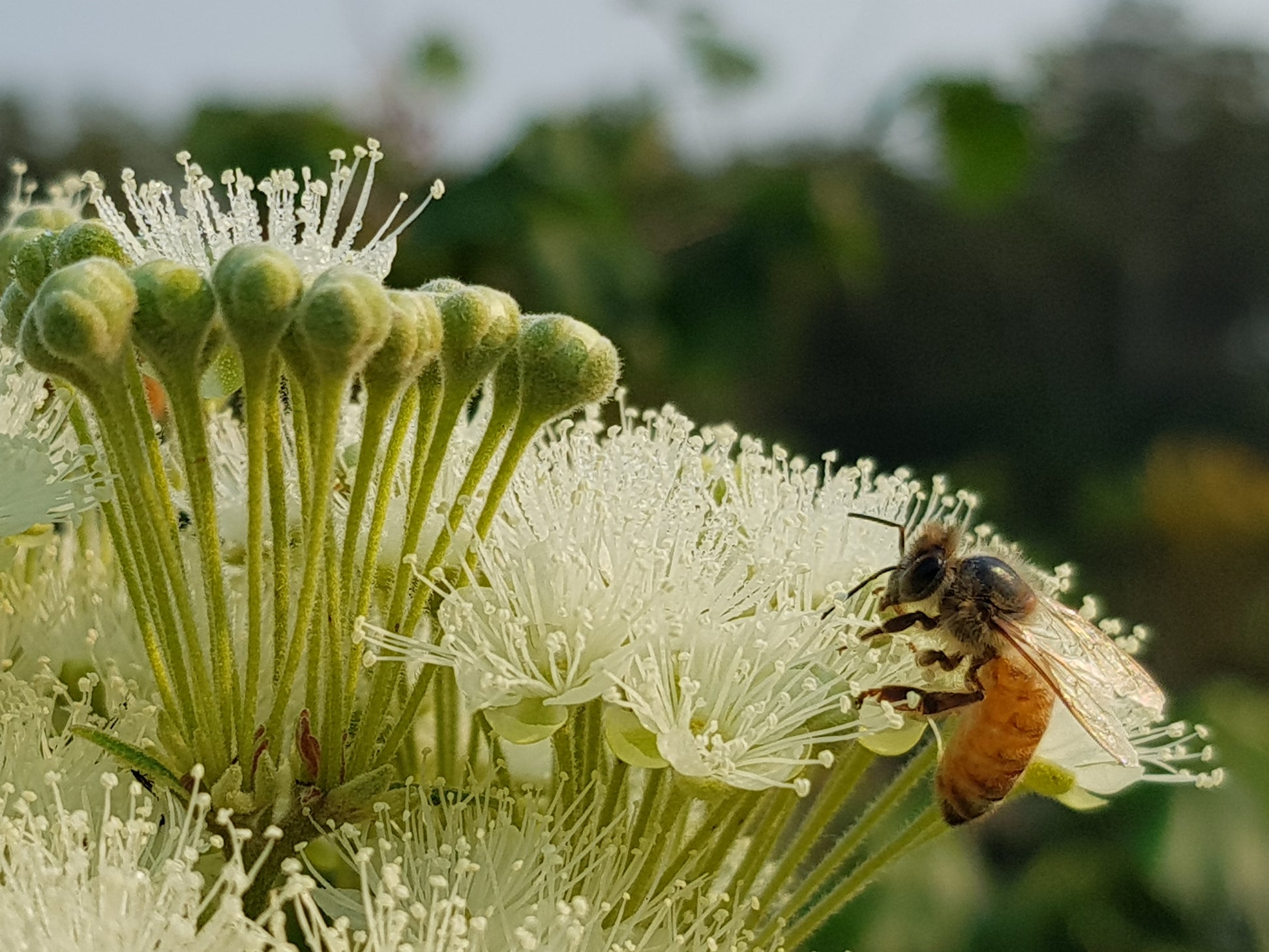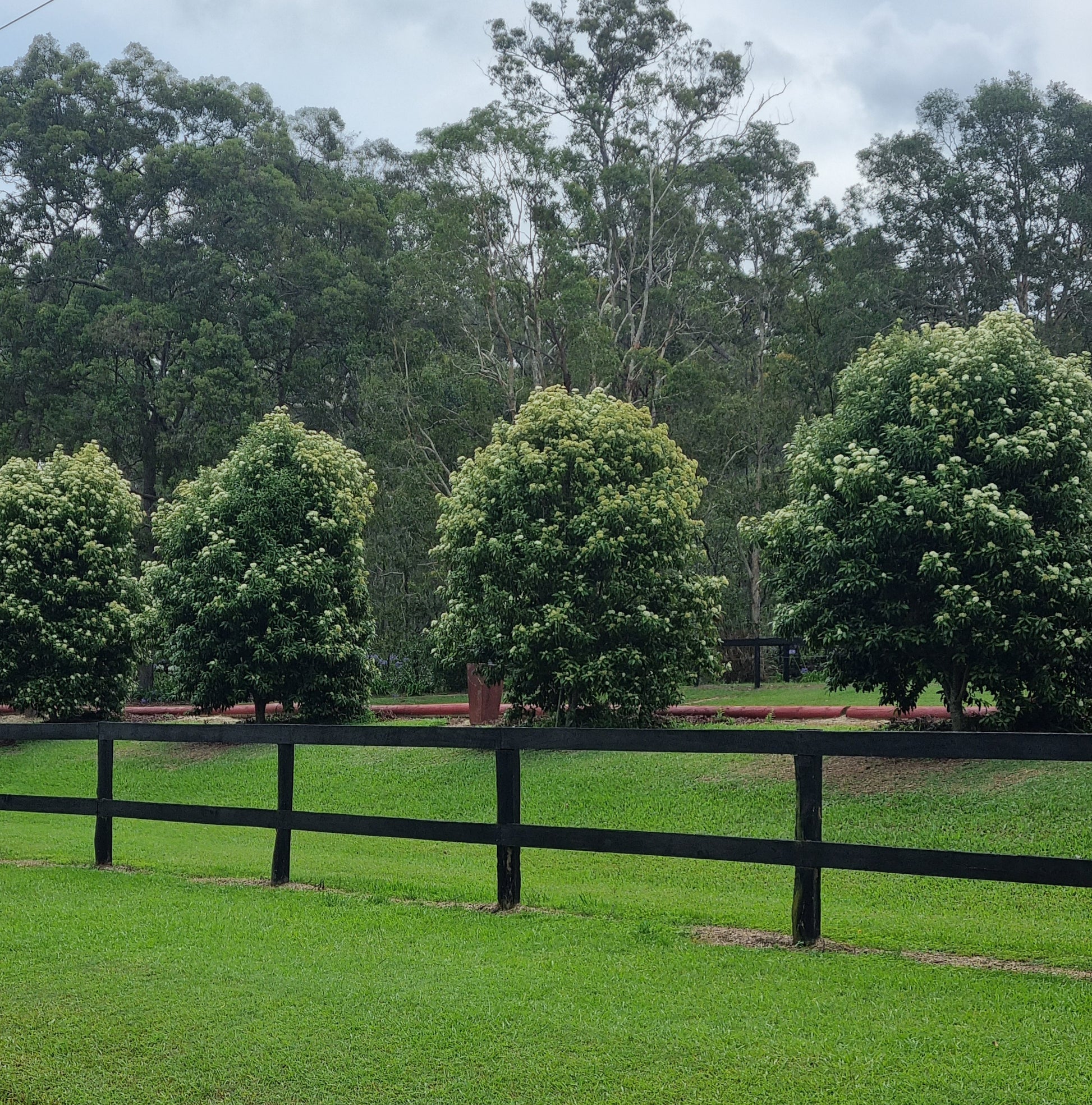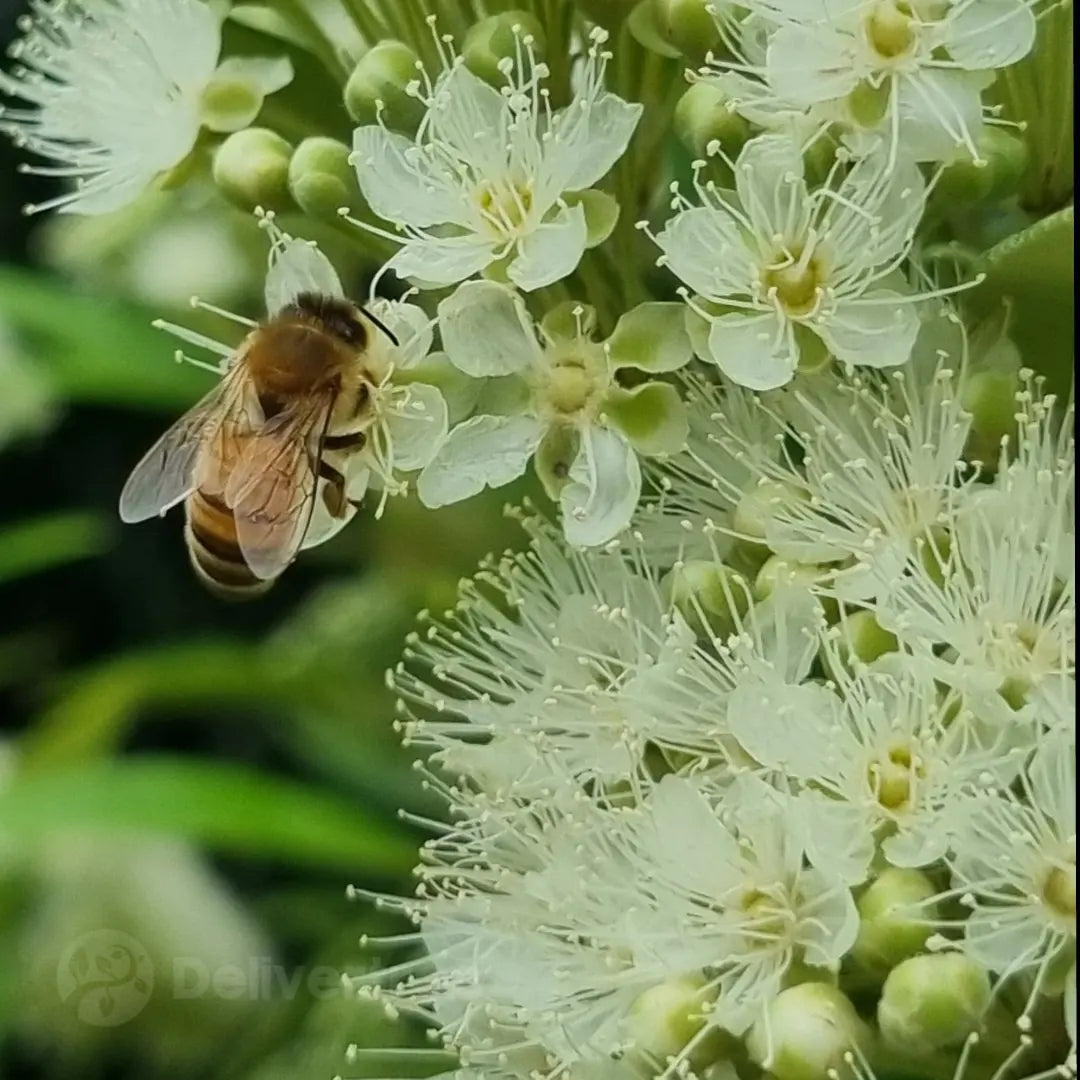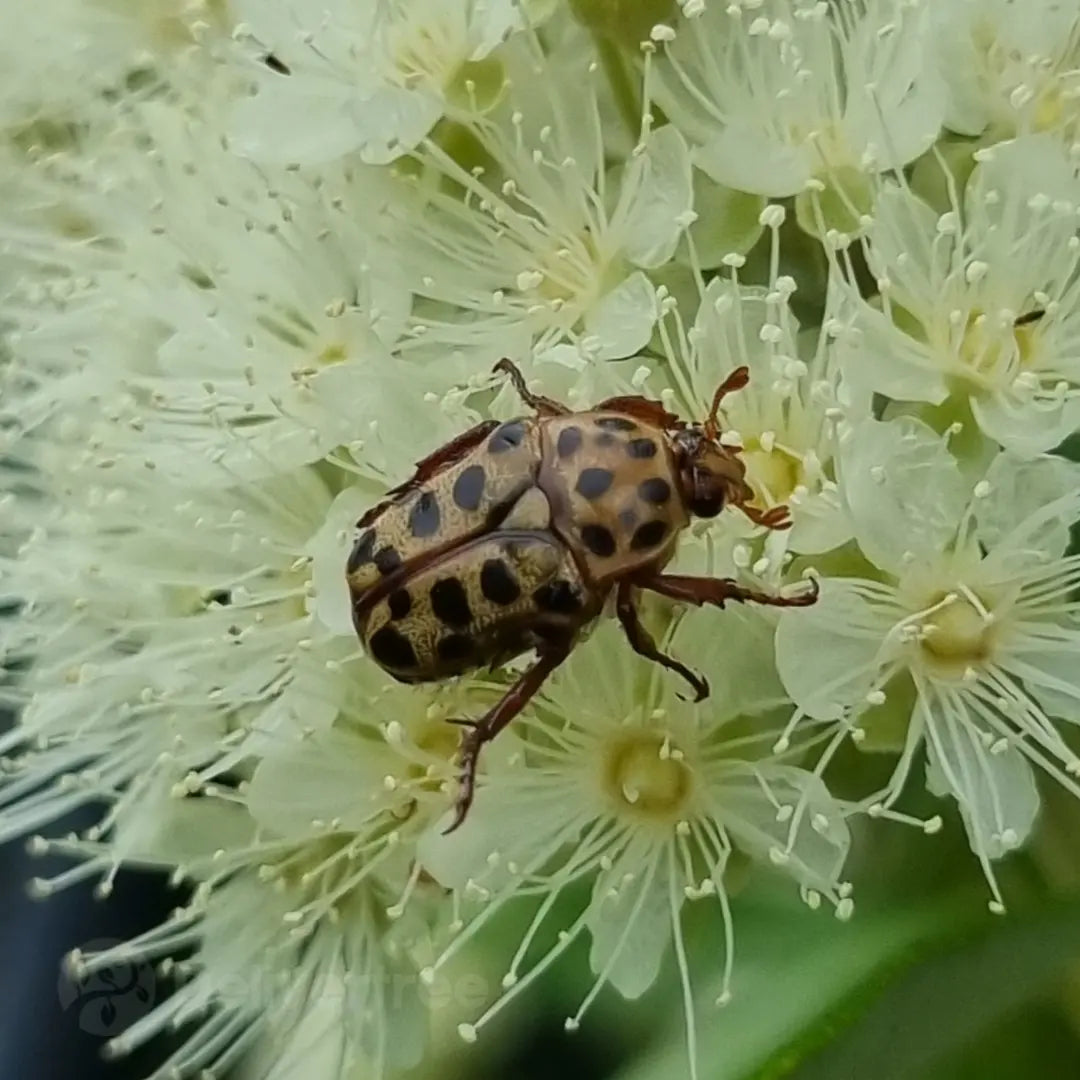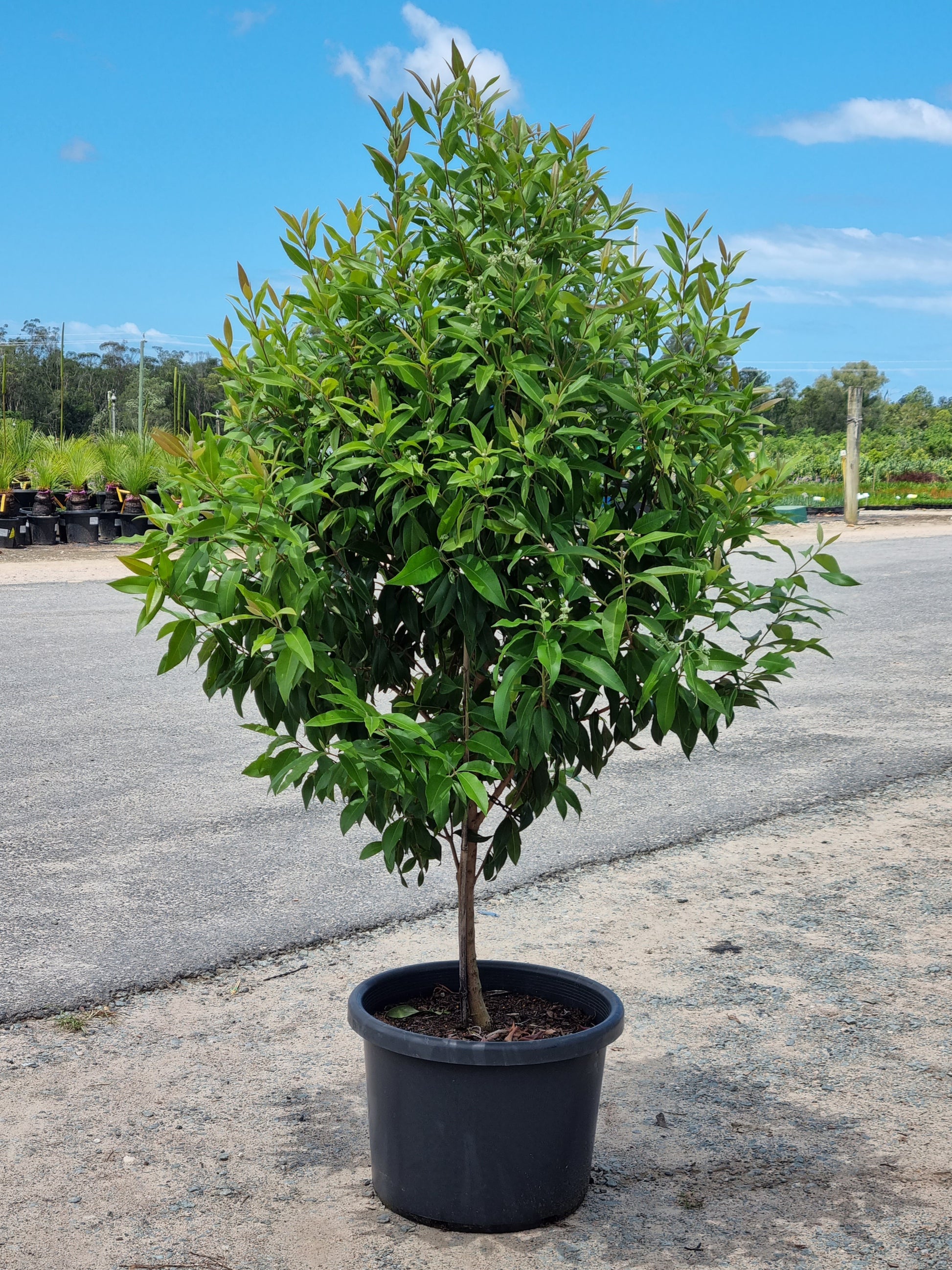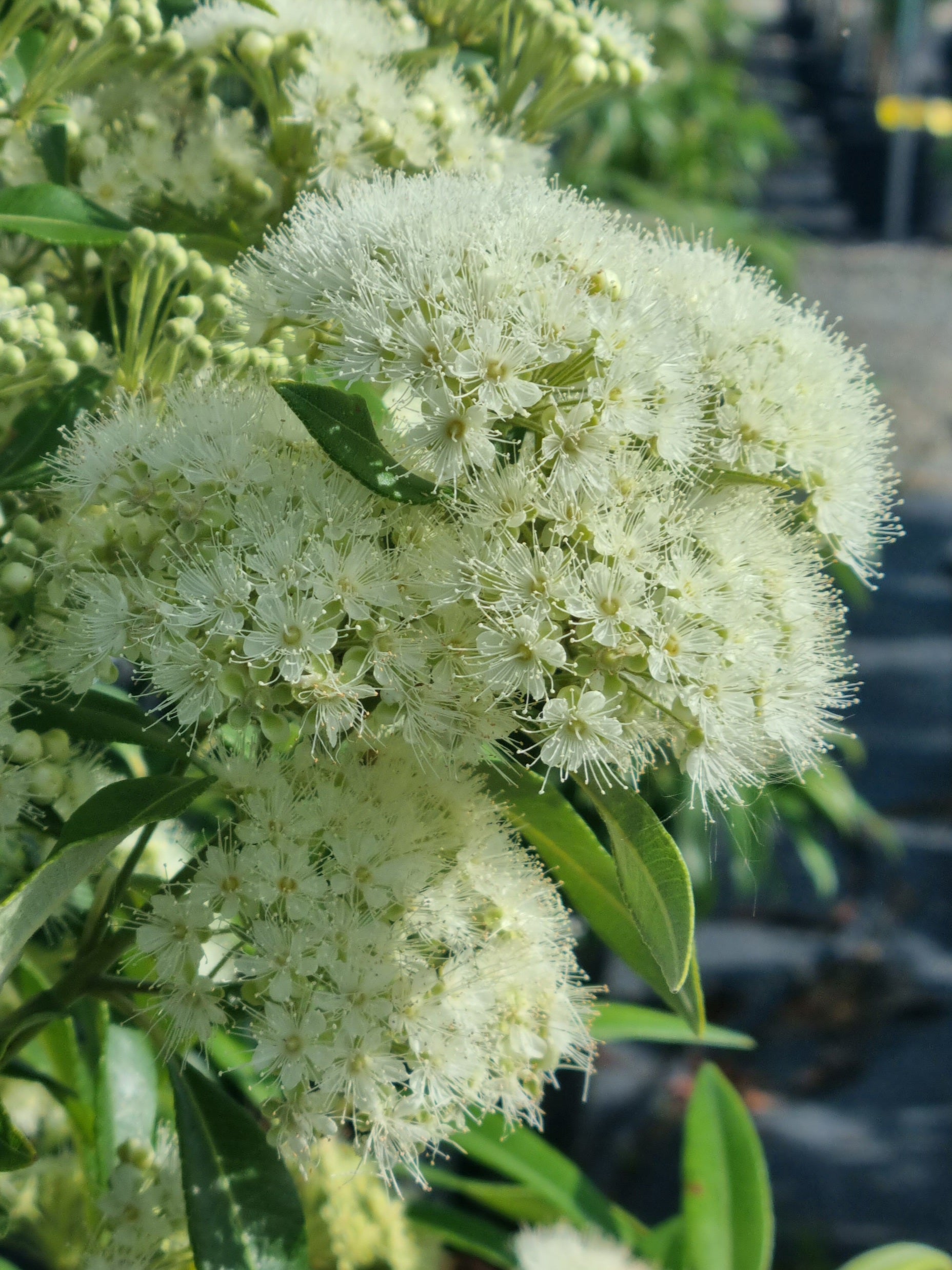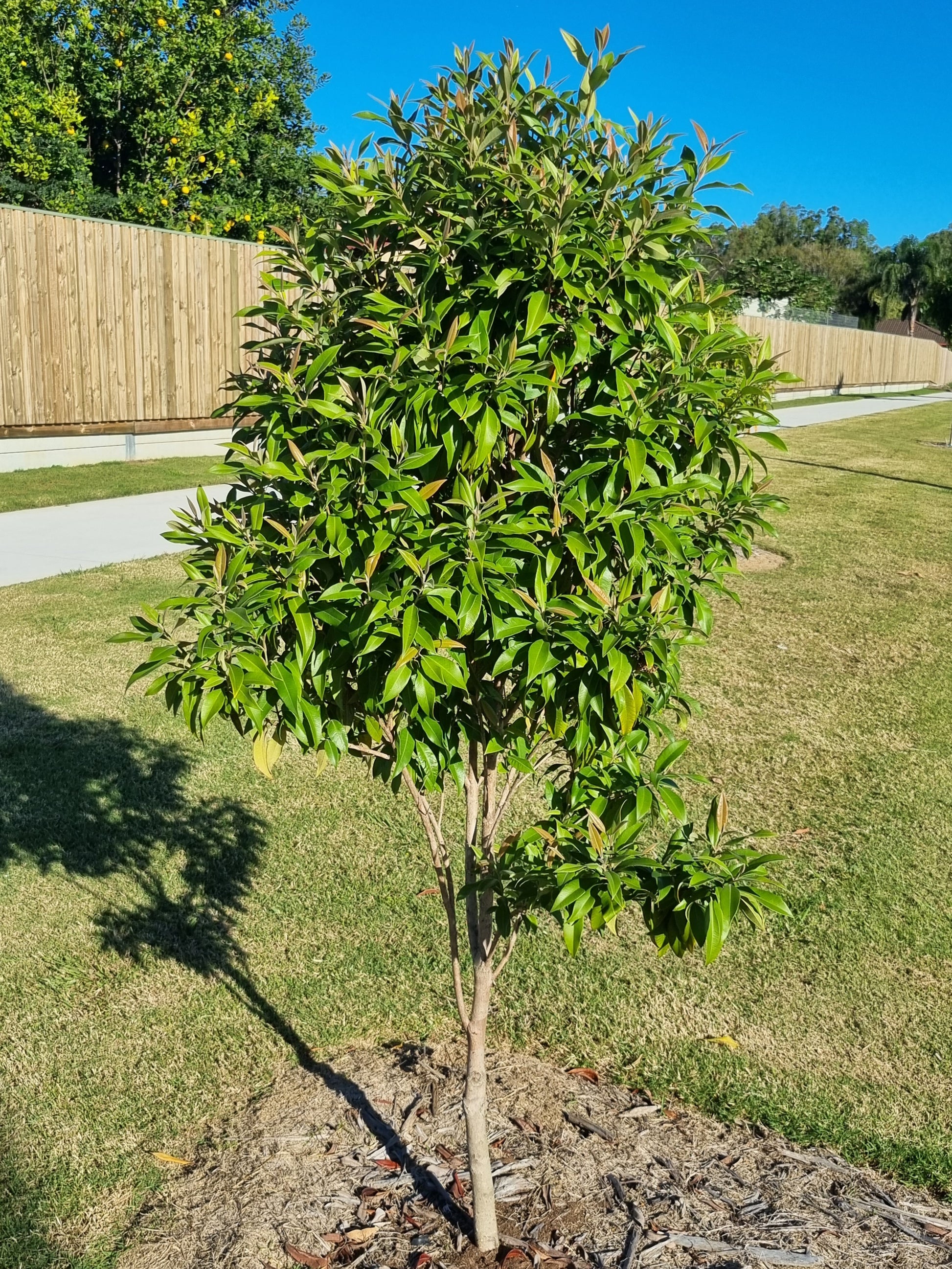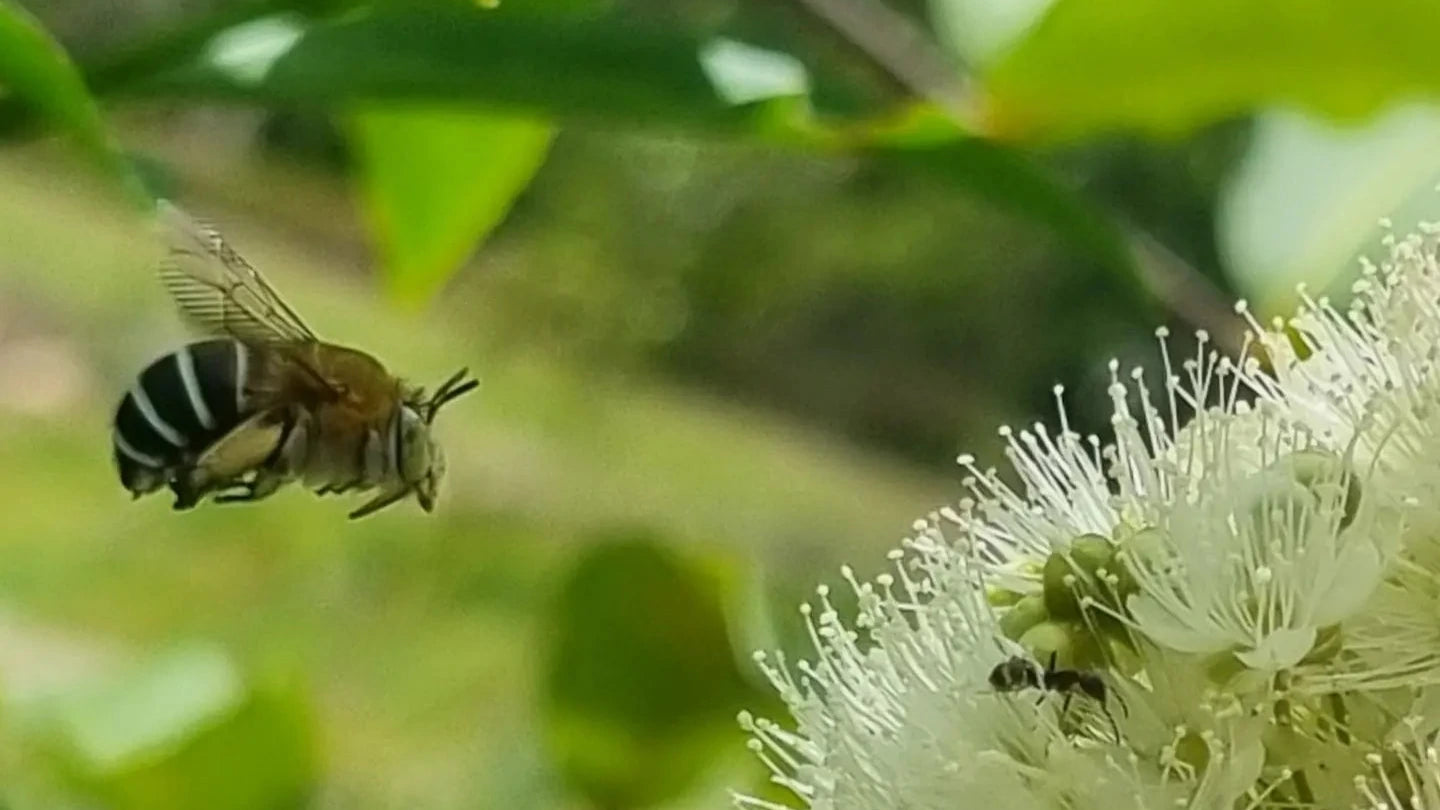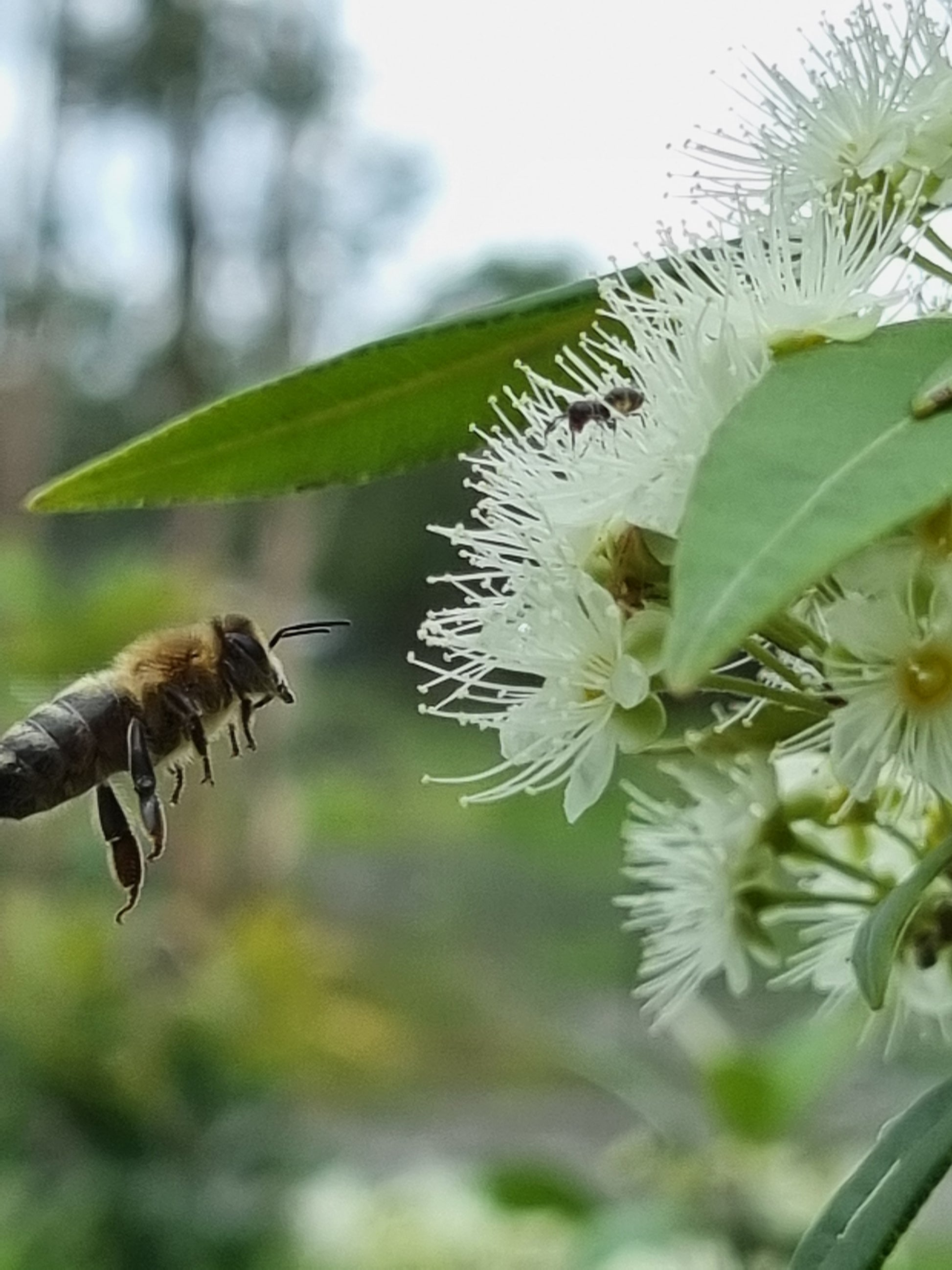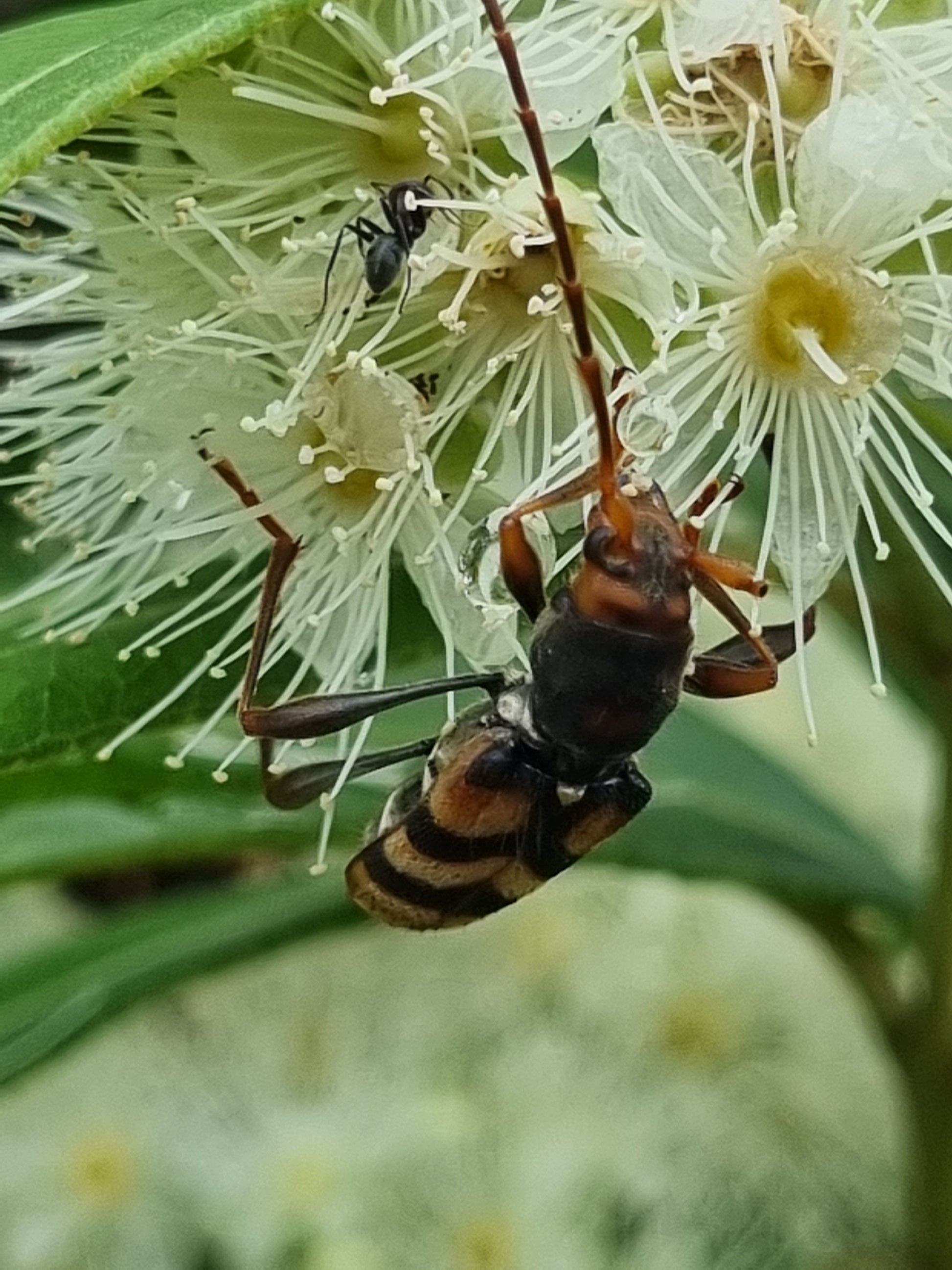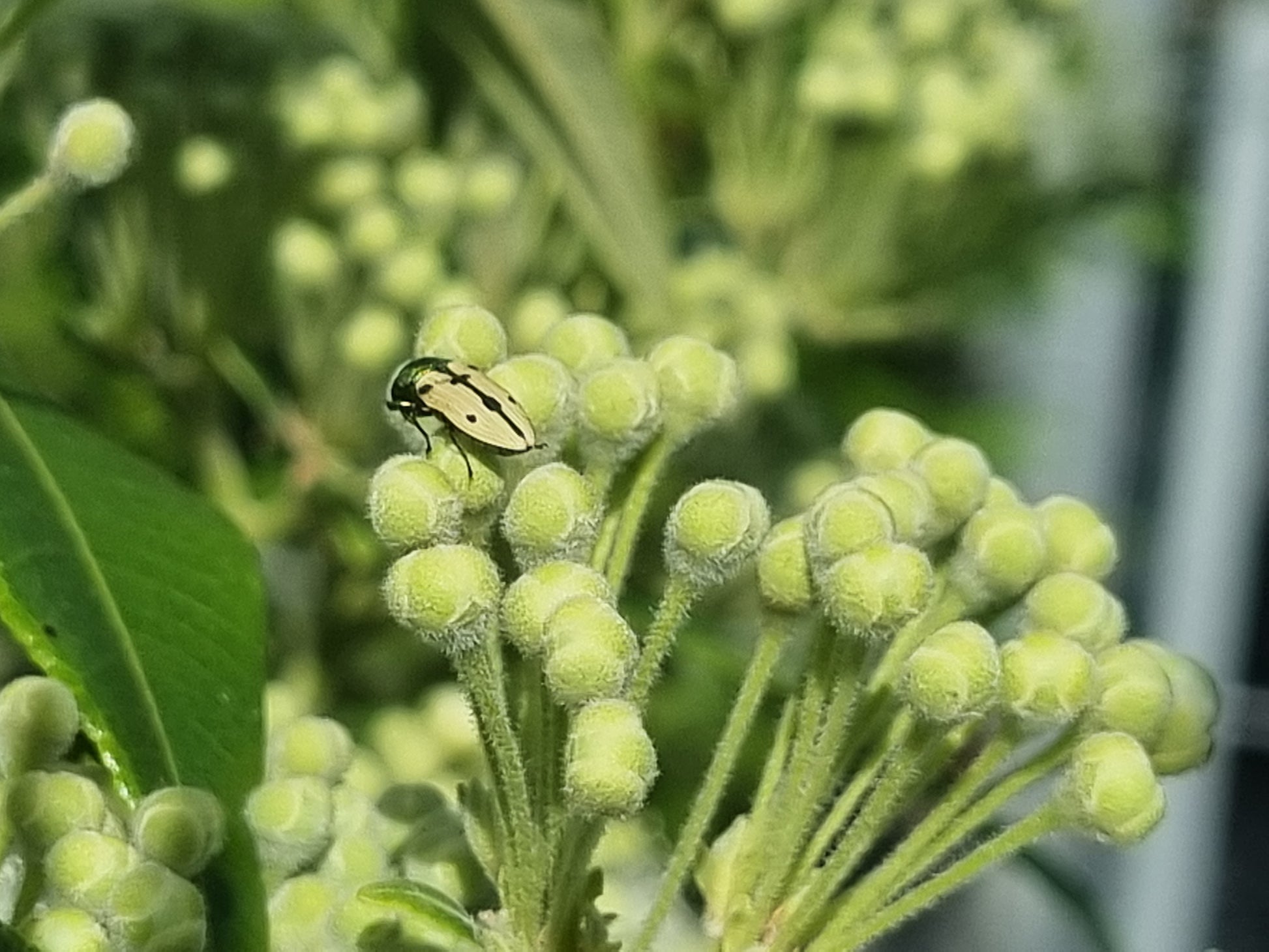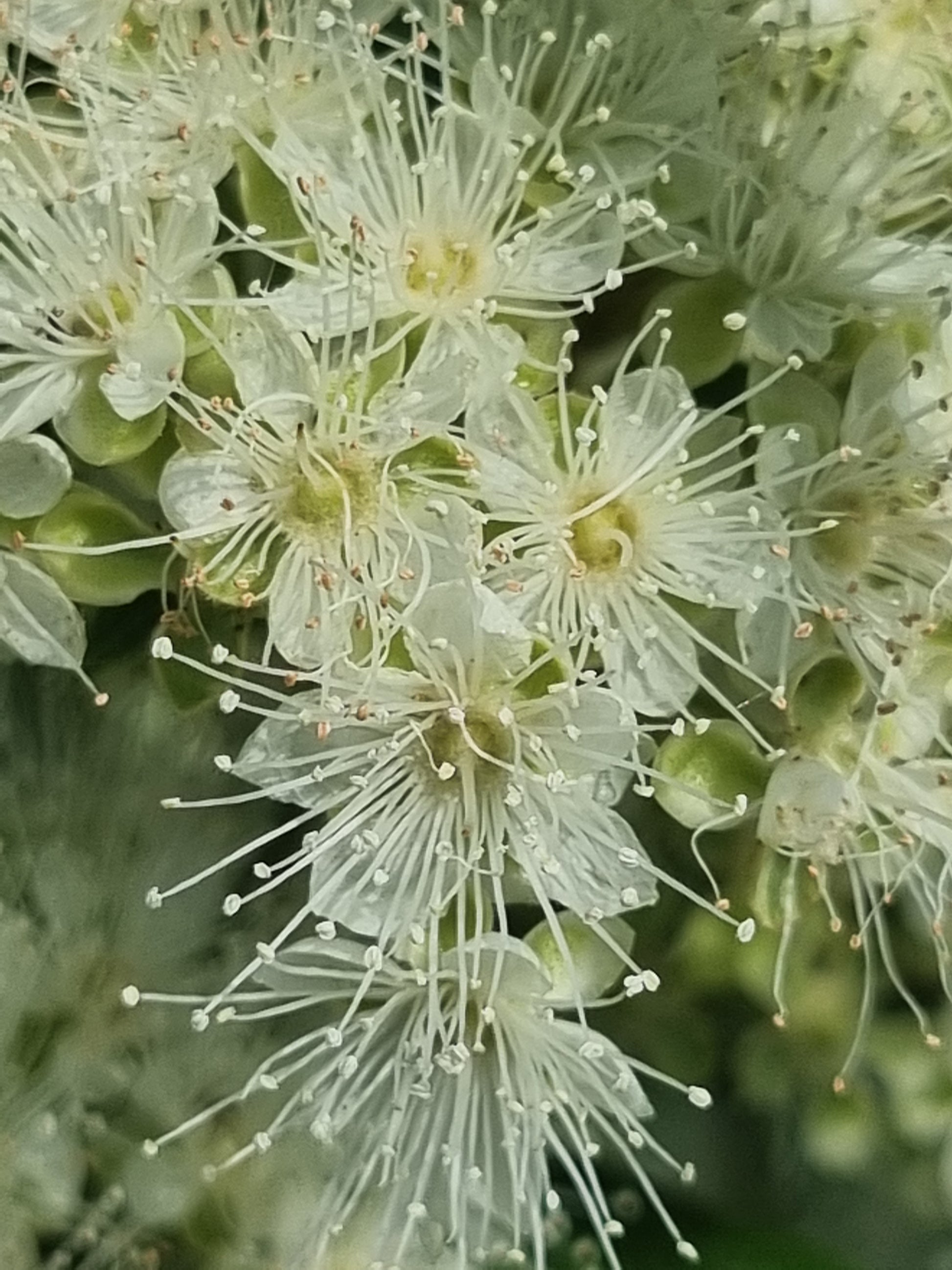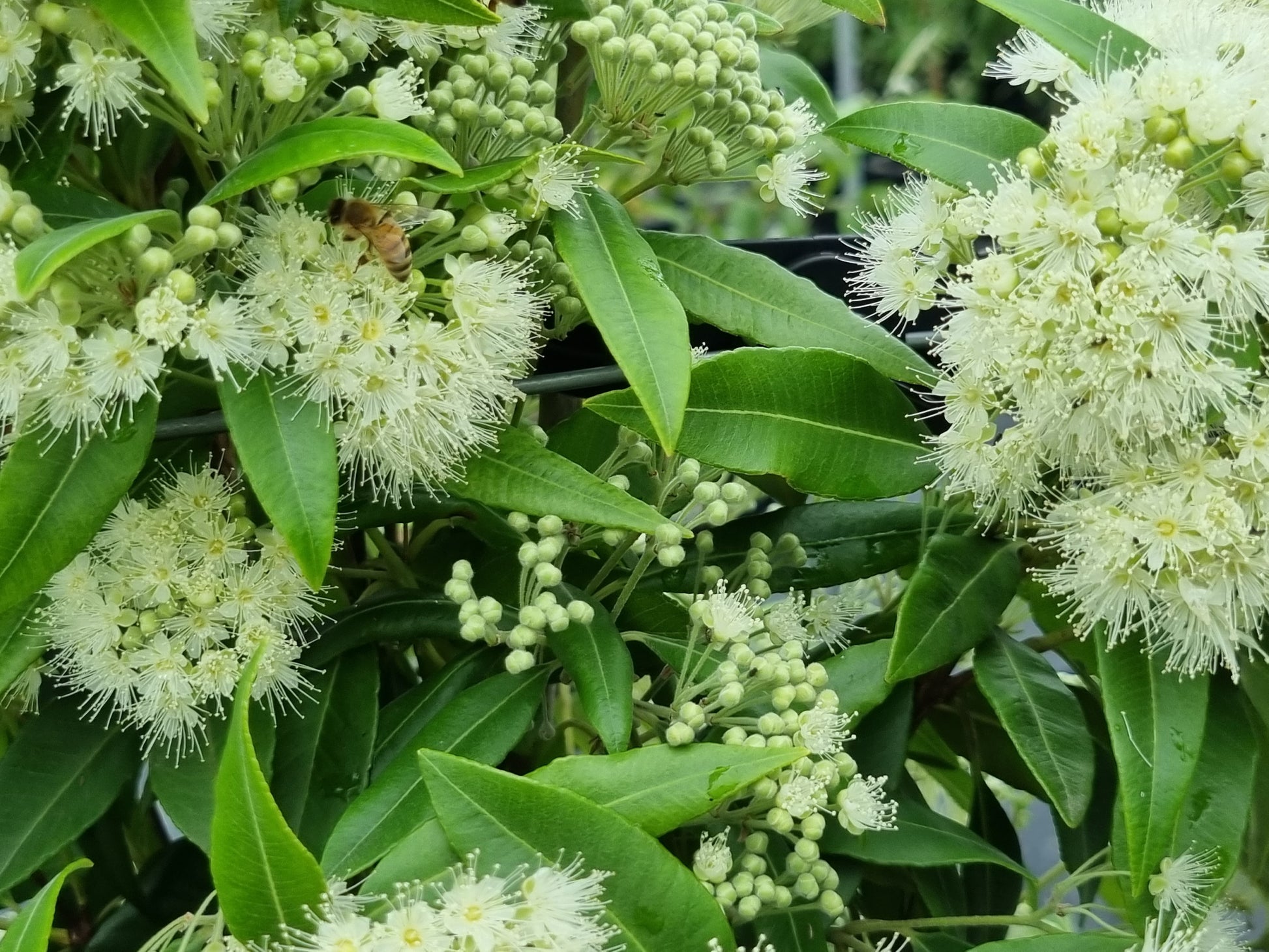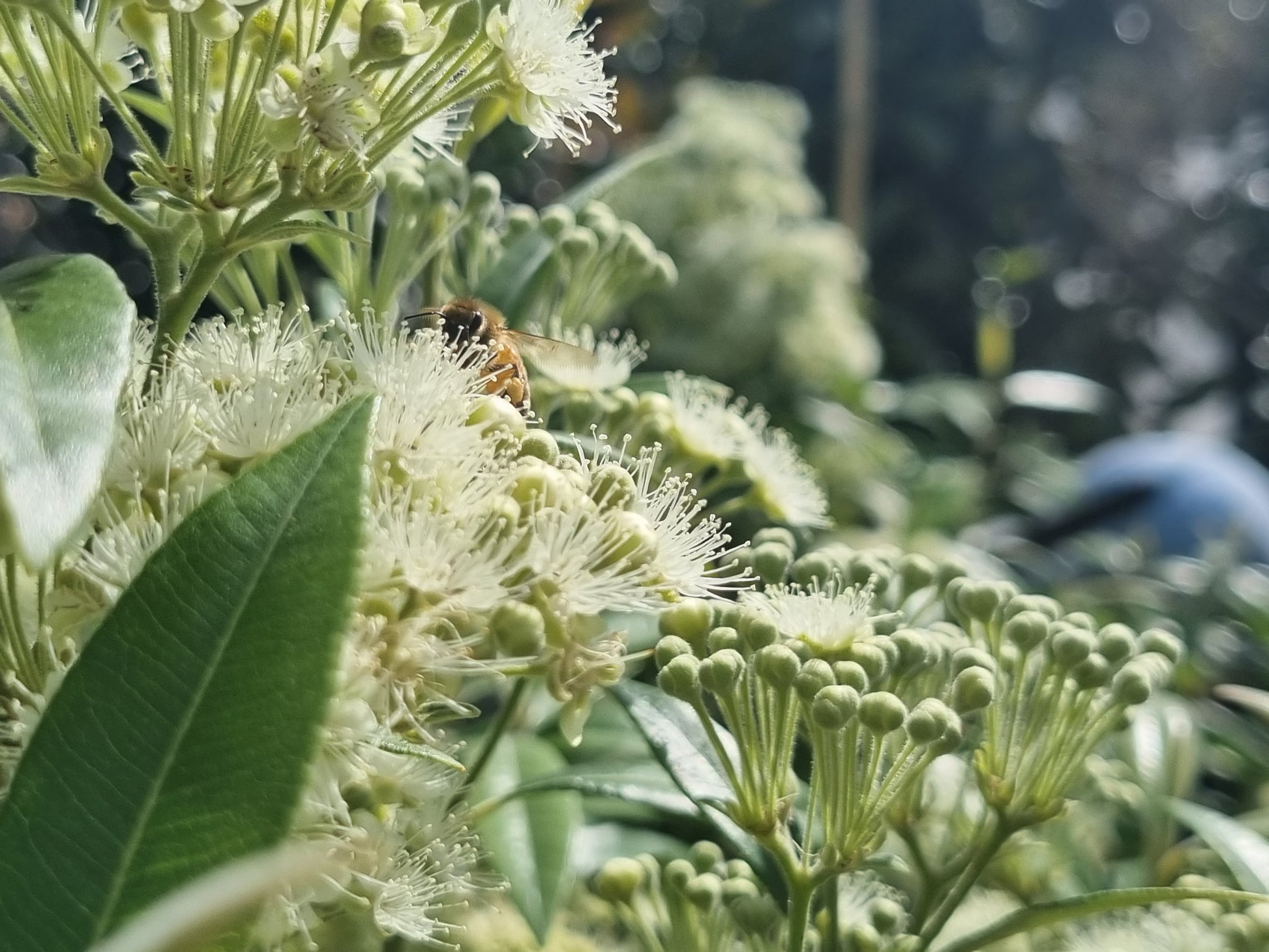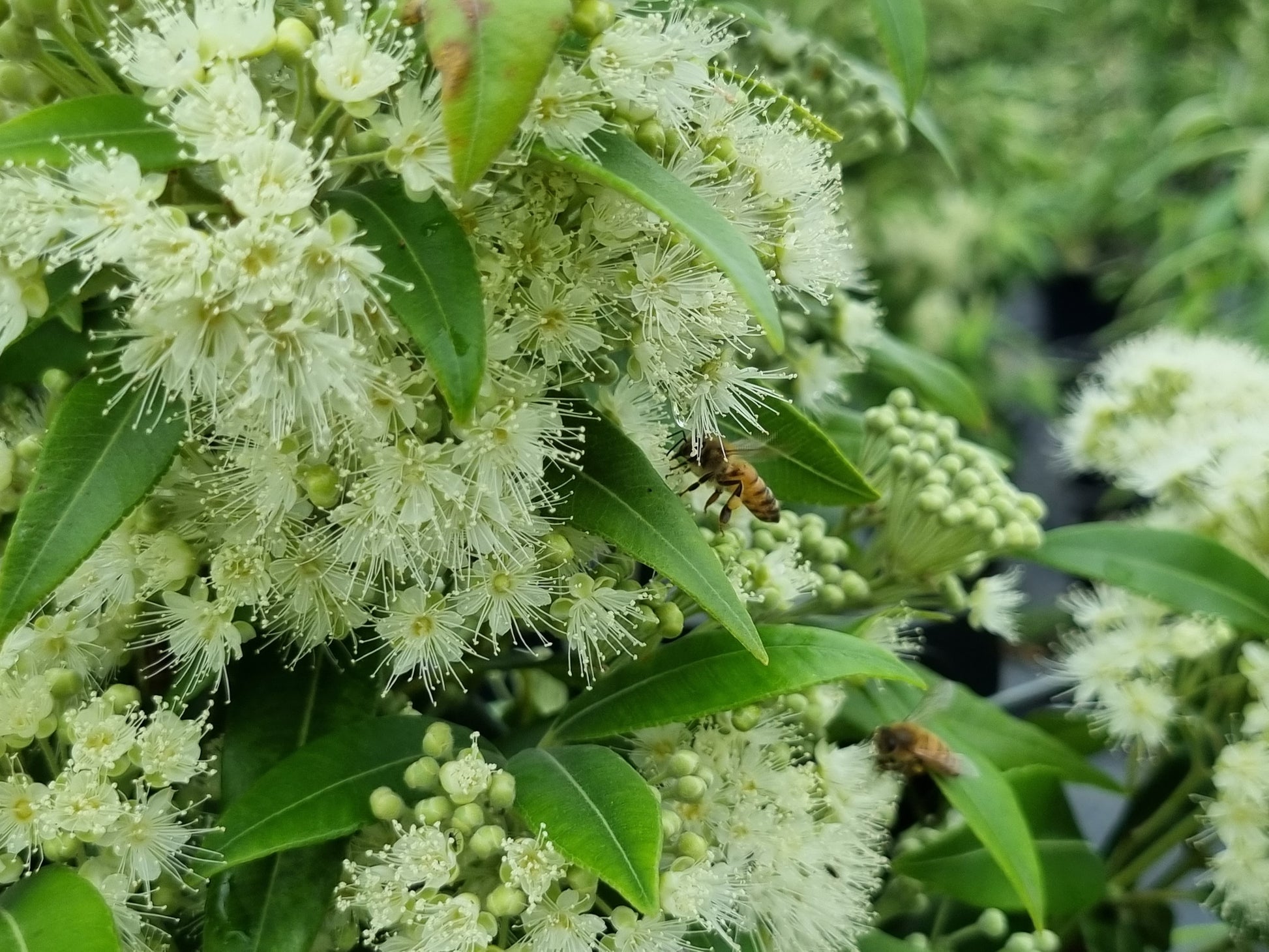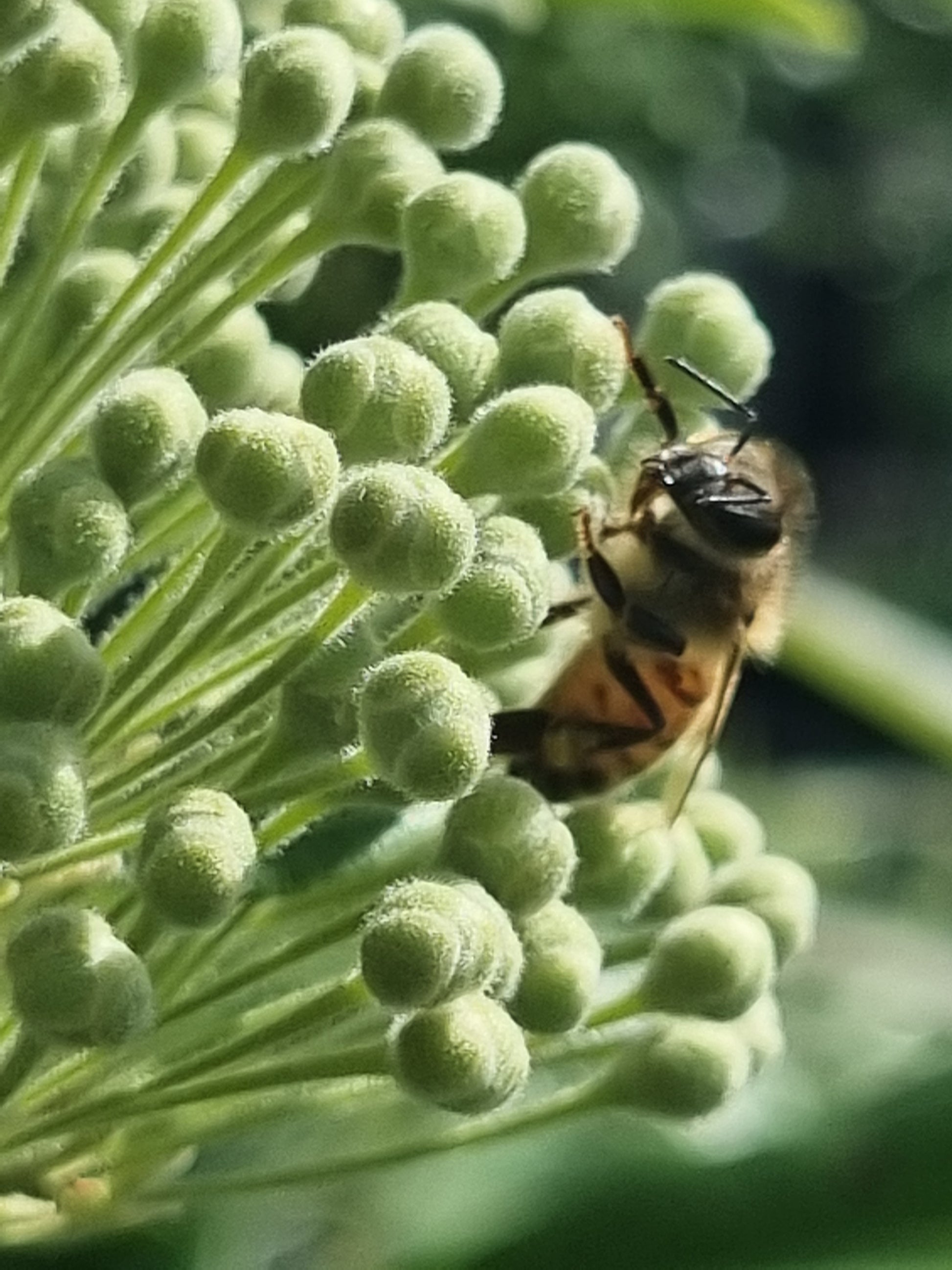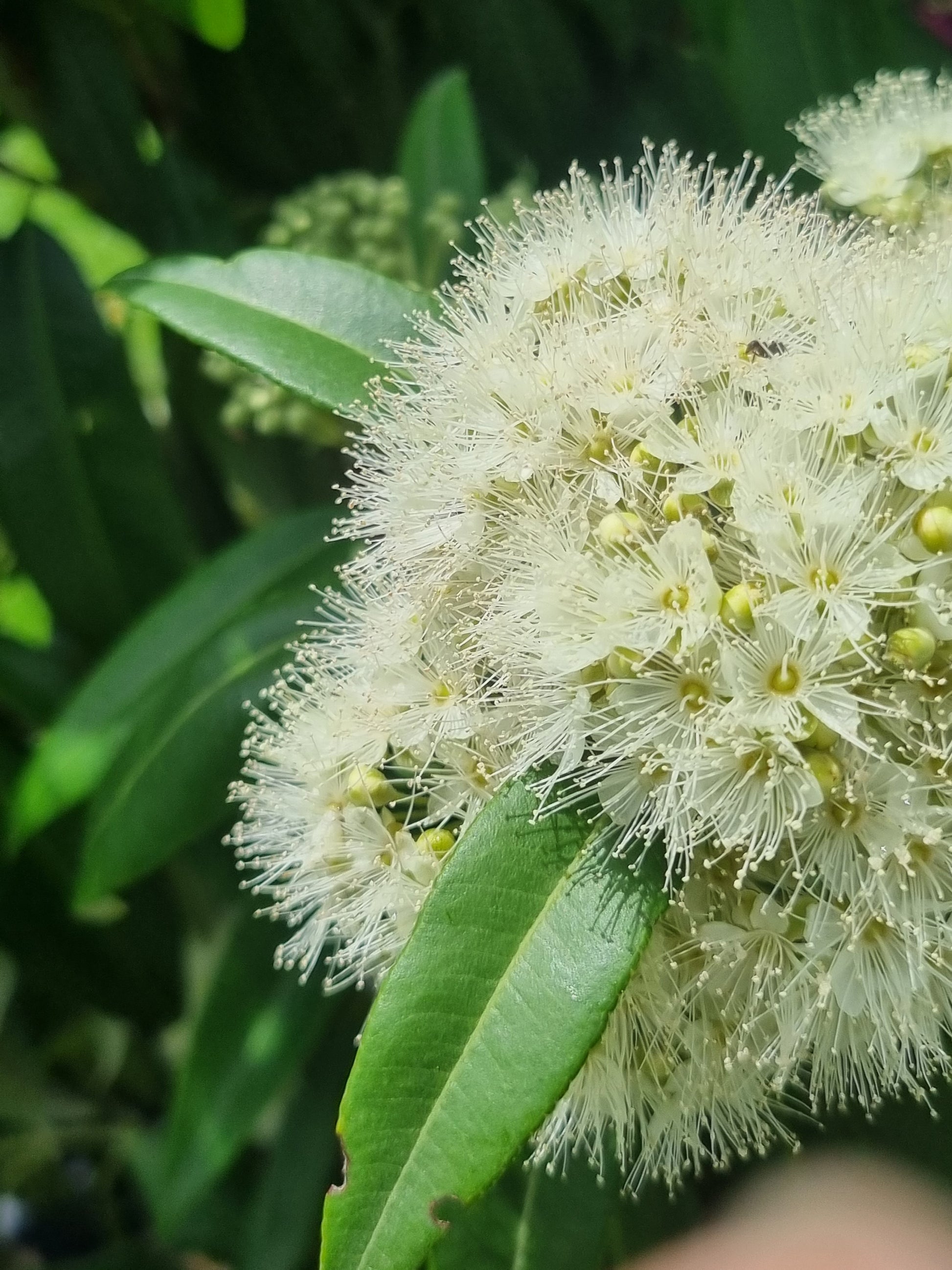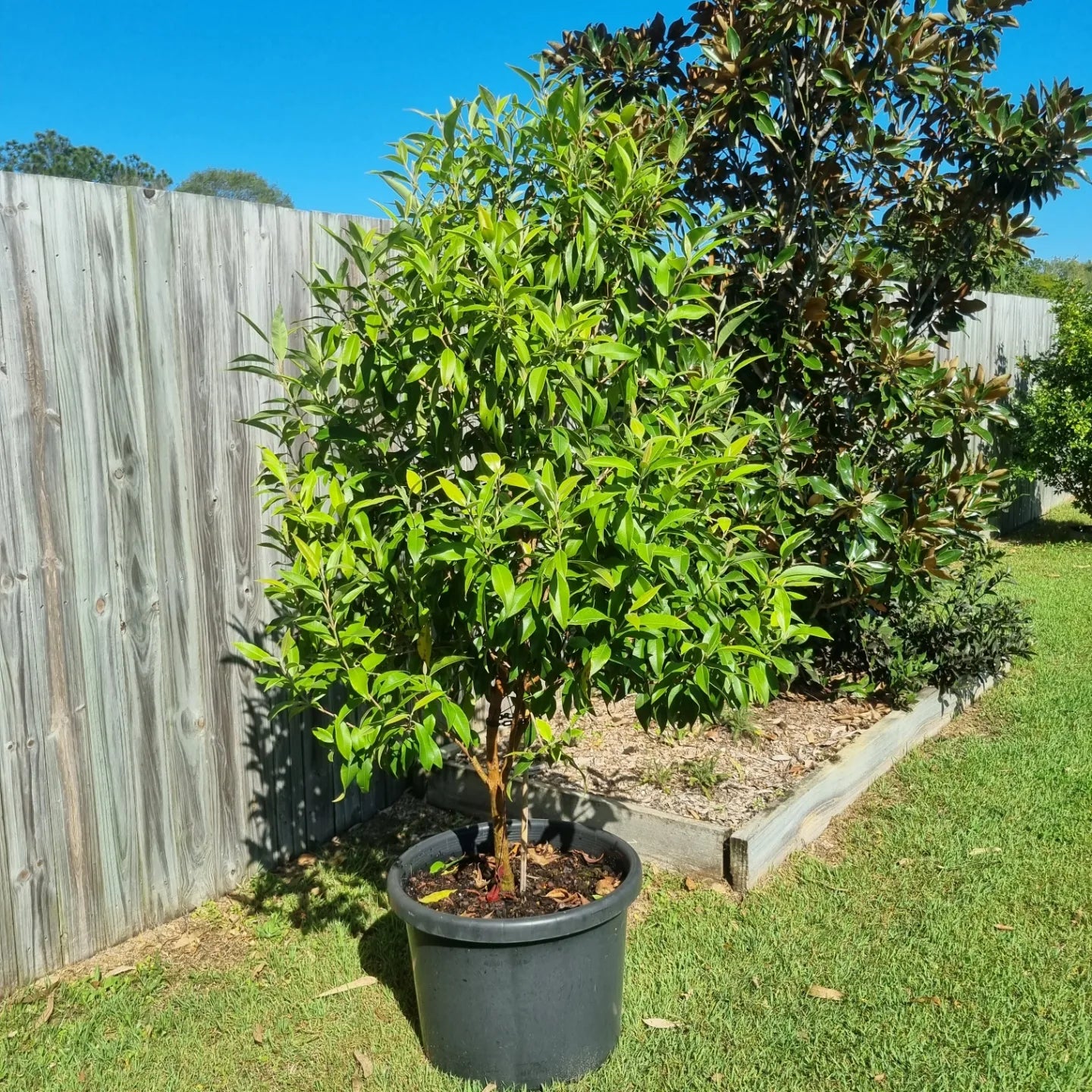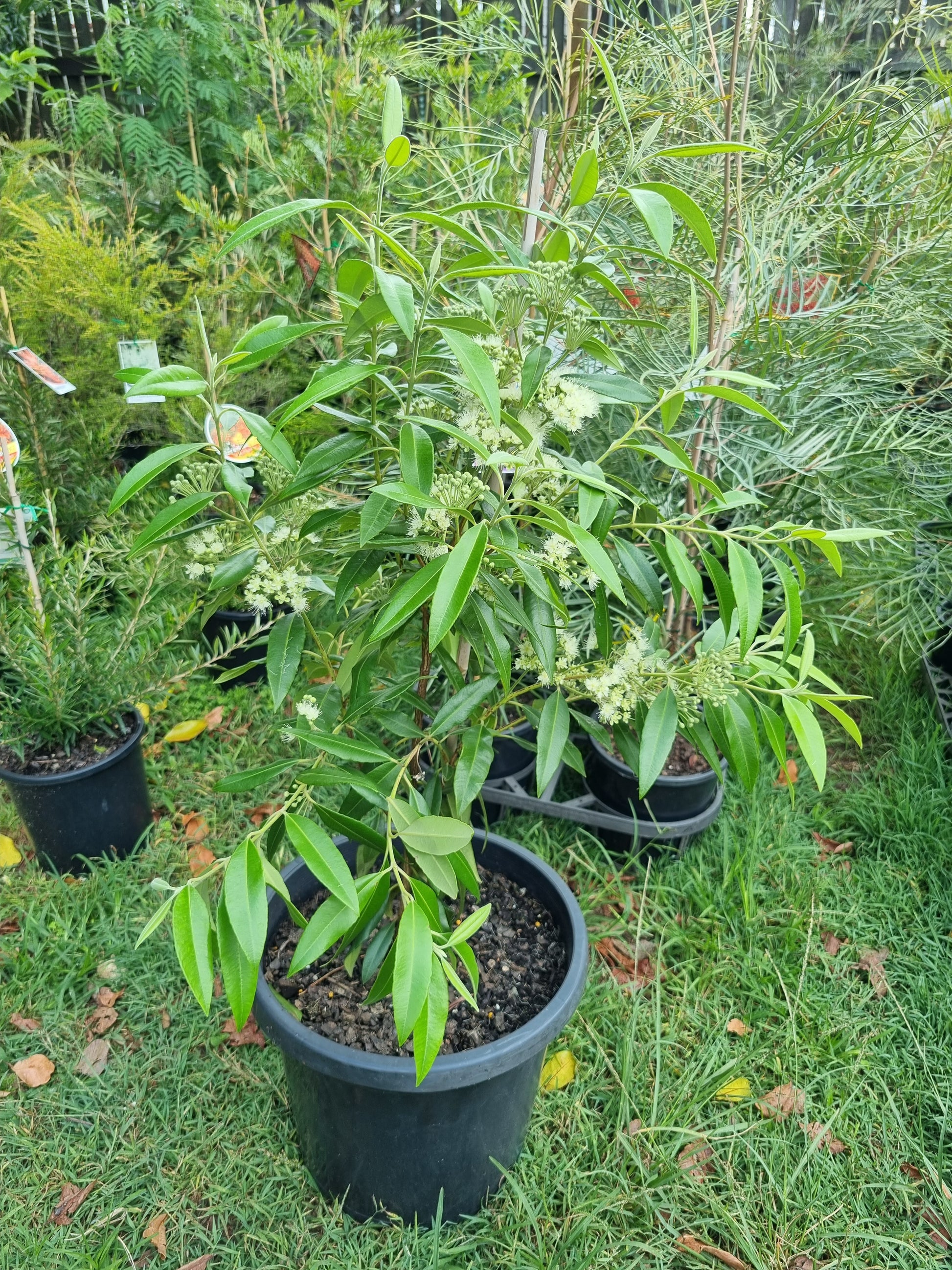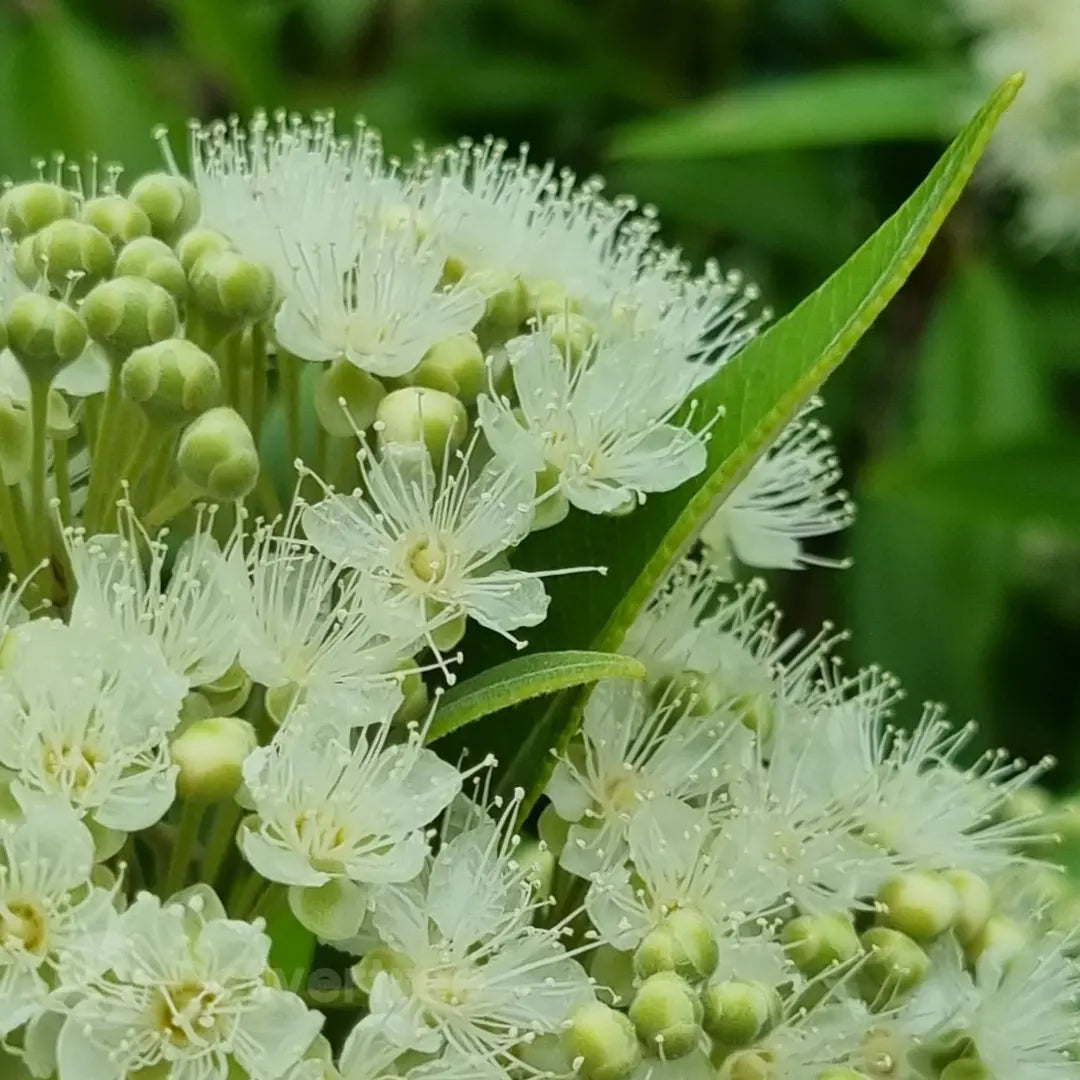Delivertree
Lemon Myrtle - Backhousia citriodora
Lemon Myrtle - Backhousia citriodora
Couldn't load pickup availability
Lemon Myrtle is a highly aromatic and versatile Australian native tree, valued for its fragrant foliage, culinary applications, medicinal properties, and ornamental beauty. With its low-branching habit and ability to be shaped for screening, hedging, or as a feature tree, it is commonly found in home gardens, streetscapes, and council plantings. Its glossy green leaves provide a refreshing lemon fragrance and are widely used in teas, syrups, cooking, and natural health remedies.
- Native to: Coastal rainforests of Queensland, from Mackay to Brisbane
- Height: 3-8 meters in cultivation; up to 10-20 meters in natural conditions
- Foliage: Glossy green, lance-shaped leaves with a strong lemon fragrance
- Flowers: Creamy white clusters of fluffy flowers bloom in summer
- Growth Habit: Low-branching, dense canopy, adaptable for screens, hedges, or feature trees
- Position: Thrives in full sun to part shade; prefers moist, well-drained soil
- Uses: Culinary, medicinal, hedging, screening, feature tree, street planting, large pots
- Fertilizer: Requires a balanced, all-purpose fertilizer rather than a native-specific blend
- Etymology: Backhousia honors botanist James Backhouse, and citriodora means “lemon-scented”
Detailed Description:
Lemon Myrtle (Backhousia citriodora) is one of Australia’s most highly regarded native trees, admired for its aromatic leaves and wide range of uses. Native to the subtropical and tropical rainforests of Queensland, it thrives in a variety of conditions, making it a valuable addition to Australian landscapes.
The tree has a naturally low-branching habit, making it ideal for hedging, screening, and windbreaks, as well as a standalone feature tree. When left to grow naturally, it can reach 3-8 meters in cultivation and up to 10-20 meters in the wild. If shaping a traditional tree form, training a central leader through adolescence is important. This involves gradually removing lower branches while maintaining proportion to encourage a single dominant trunk.
Lemon Myrtle’s glossy, bright green foliage emits an intense lemon fragrance when crushed. The scent is most noticeable when mowing or walking beneath the tree, as the fallen leaves release their natural oils into the air.
Flowering and Fruit
During summer, Lemon Myrtle produces clusters of creamy white, fluffy flowers in terminal inflorescences, creating a striking contrast against the lush green foliage. These nectar-rich blooms attract bees, butterflies, and other pollinators, contributing to biodiversity in the garden.
Following flowering, the tree produces small, woody fruit capsules, though it is primarily cultivated for its fragrant leaves rather than its fruit.
Culinary and Medicinal Uses
Lemon Myrtle is one of the most widely used native Australian bushfoods, celebrated for its strong citrus aroma and rich nutritional profile. Its leaves contain up to 98% citral, making it one of the best natural sources of lemon fragrance and flavor.
Culinary Uses
- Teas and infusions: Fresh or dried leaves can be steeped in hot water to make lemon myrtle tea. For a simple and flavorful blend, crush or bruise one or two leaves and steep them with a regular tea bag to enhance the aroma and taste.
- Syrups and ice blocks: To make a natural lemon myrtle syrup, boil bruised leaves in water, mix with sugar or sweetener to taste, strain, and freeze into healthy ice blocks—a refreshing and nutritious alternative to artificial frozen treats.
-
Cooking and baking: The leaves add a subtle lemony zest to marinades, sauces, desserts, and spice blends. Popular applications include:
- Infusing into cream-based desserts such as panna cotta, cheesecakes, and custards
- Enhancing seasoning blends for chicken, fish, lamb, and vegetables
- Adding fragrance and flavor to jams, chutneys, and salad dressings
Health Benefits and Nutritional Value
Lemon Myrtle is highly valued for its antibacterial, antifungal, and antioxidant properties. It has been used traditionally for immune support, digestive health, and relaxation.
One of the most notable nutrients found in Lemon Myrtle is lutein, an essential antioxidant that plays a critical role in eye health. Lutein helps protect the eyes from oxidative stress and blue light exposure, reducing the risk of age-related macular degeneration and cataracts. This makes Lemon Myrtle a beneficial addition to the diet, particularly for those seeking natural ways to support long-term vision health.
Growing and Maintenance
Lemon Myrtle is a hardy and adaptable tree that thrives in full sun to part shade. It prefers moist, well-drained soil and benefits from watering 1 or 2 times per week during establishment to promote healthy growth. Be sure to check moisture levels in the soil to avoid waterlogging, Once established, it becomes quite drought-tolerant, though occasional watering is beneficial in extended dry periods.
Pruning and Shaping
- Pruning should focus on symmetry, ensuring the tree maintains an even and well-balanced structure
- For a tree-like shape, remove lower branches gradually as the tree matures while maintaining proportion
- If growing as a hedge, prune regularly to encourage dense foliage and keep it as low as 2 meters if desired
- When growing a tree form, removing redundant branches that cross inside the trunk is optional but can enhance structure and airflow; this is typically done for tree specimens but is not necessary for hedging
Fertilizing
Many gardeners assume that because Lemon Myrtle is a native tree, it requires low-phosphorus fertilizers. However, this is a misconception. Lemon Myrtle thrives with a balanced, all-purpose fertilizer that supports vigorous growth and abundant flowering. Regular feeding will encourage lush foliage and an increased yield of fragrant leaves.
Container Growing
Lemon Myrtle can be grown in large pots, making it an excellent choice for courtyards, patios, or balconies. However, container-grown trees require frequent watering, often daily, particularly in warmer months.
Planting Benefits
- Aesthetic appeal: Glossy green leaves, fragrant flowers, and an elegant growth habit make it a visually stunning addition to any garden
- Culinary and medicinal uses: A highly versatile plant, offering a natural lemon flavor and numerous health benefits
- Wildlife attraction: The nectar-rich flowers attract bees, butterflies, and pollinators, supporting biodiversity
- Versatility: Can be used as a hedge, screen, feature tree, or container plant
- Low maintenance: Once established, it requires minimal care, apart from occasional pruning
- Aromatic experience: Releases a refreshing lemon fragrance when leaves are crushed, creating a delightful sensory effect in the garden
Lemon Myrtle is an exceptional Australian native, combining ornamental beauty, culinary richness, medicinal value, and environmental benefits. Whether planted as a feature tree, hedge, or container plant, it remains one of the most rewarding trees to cultivate.
Share
